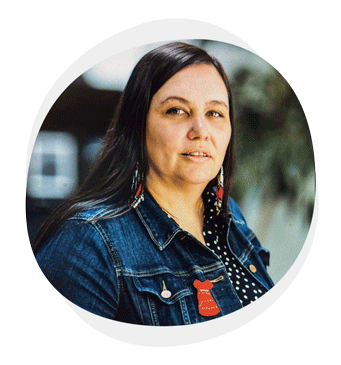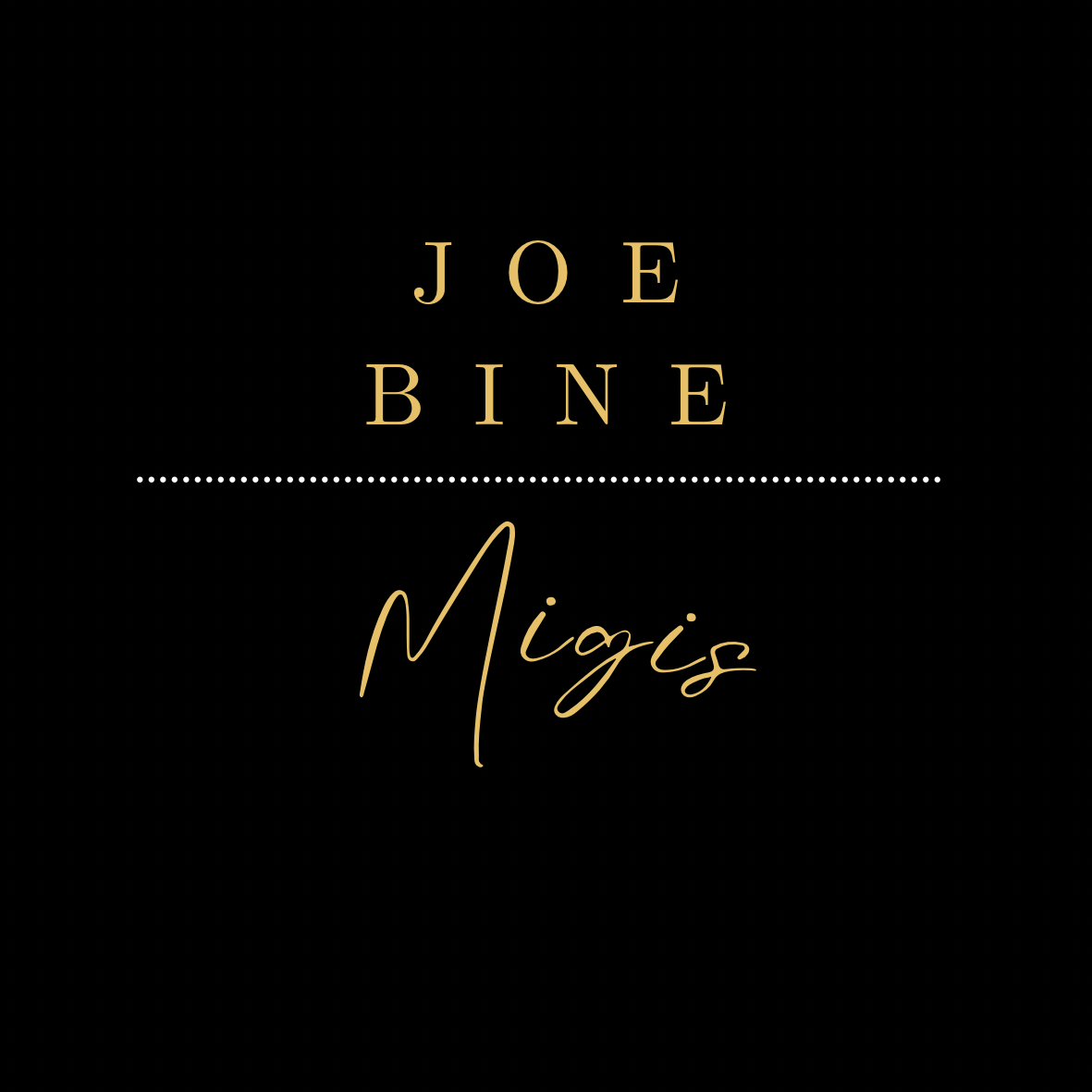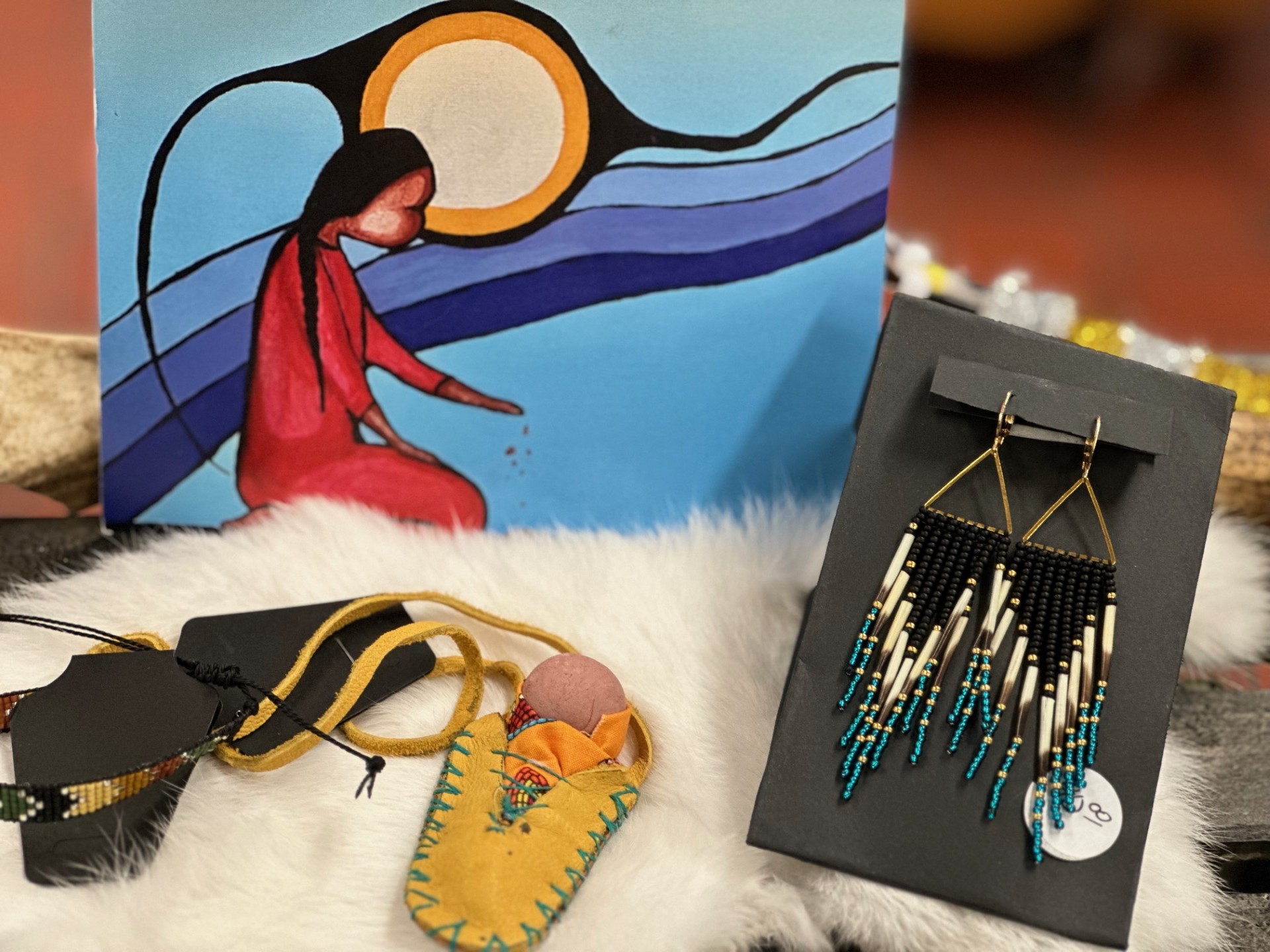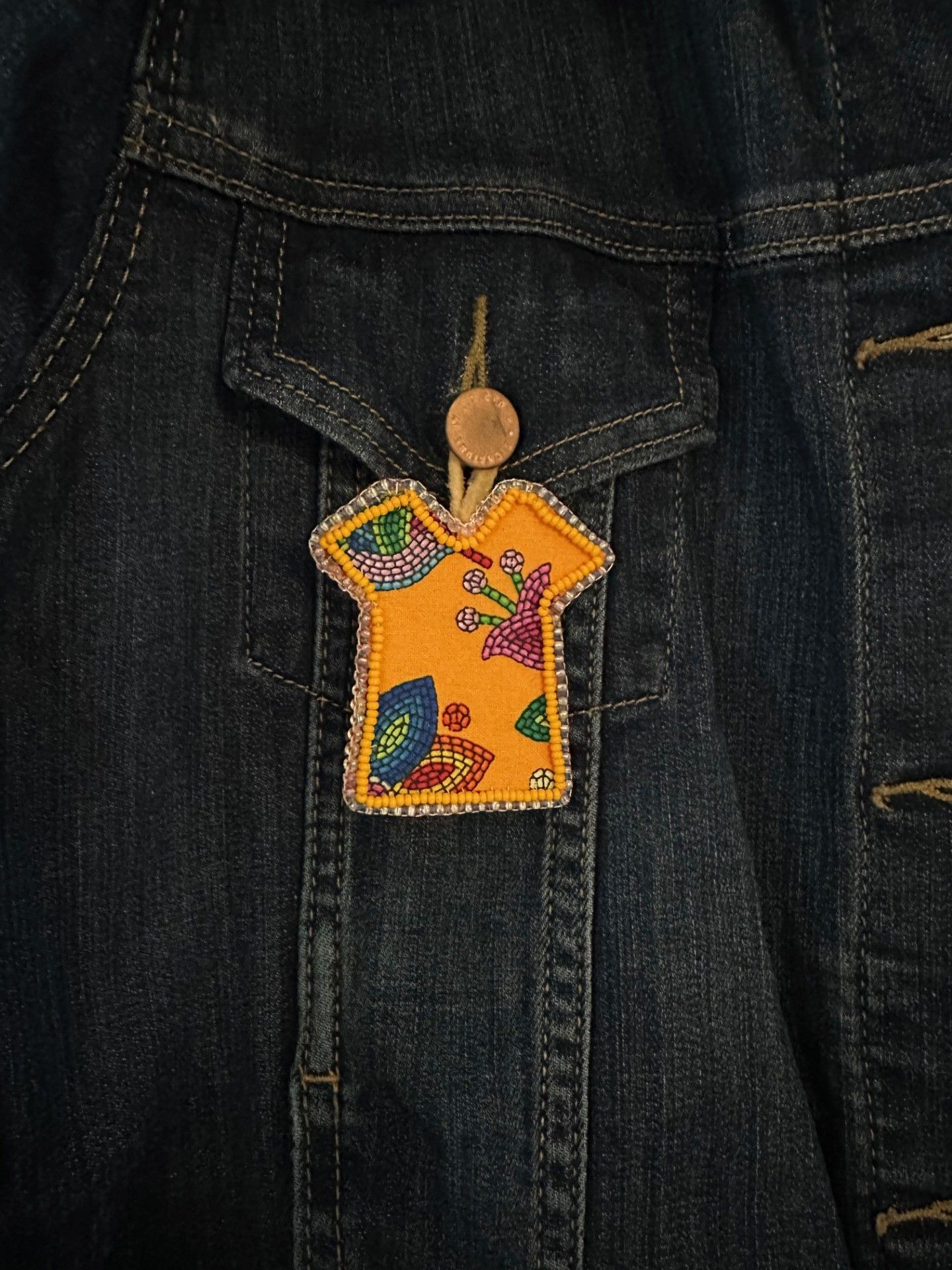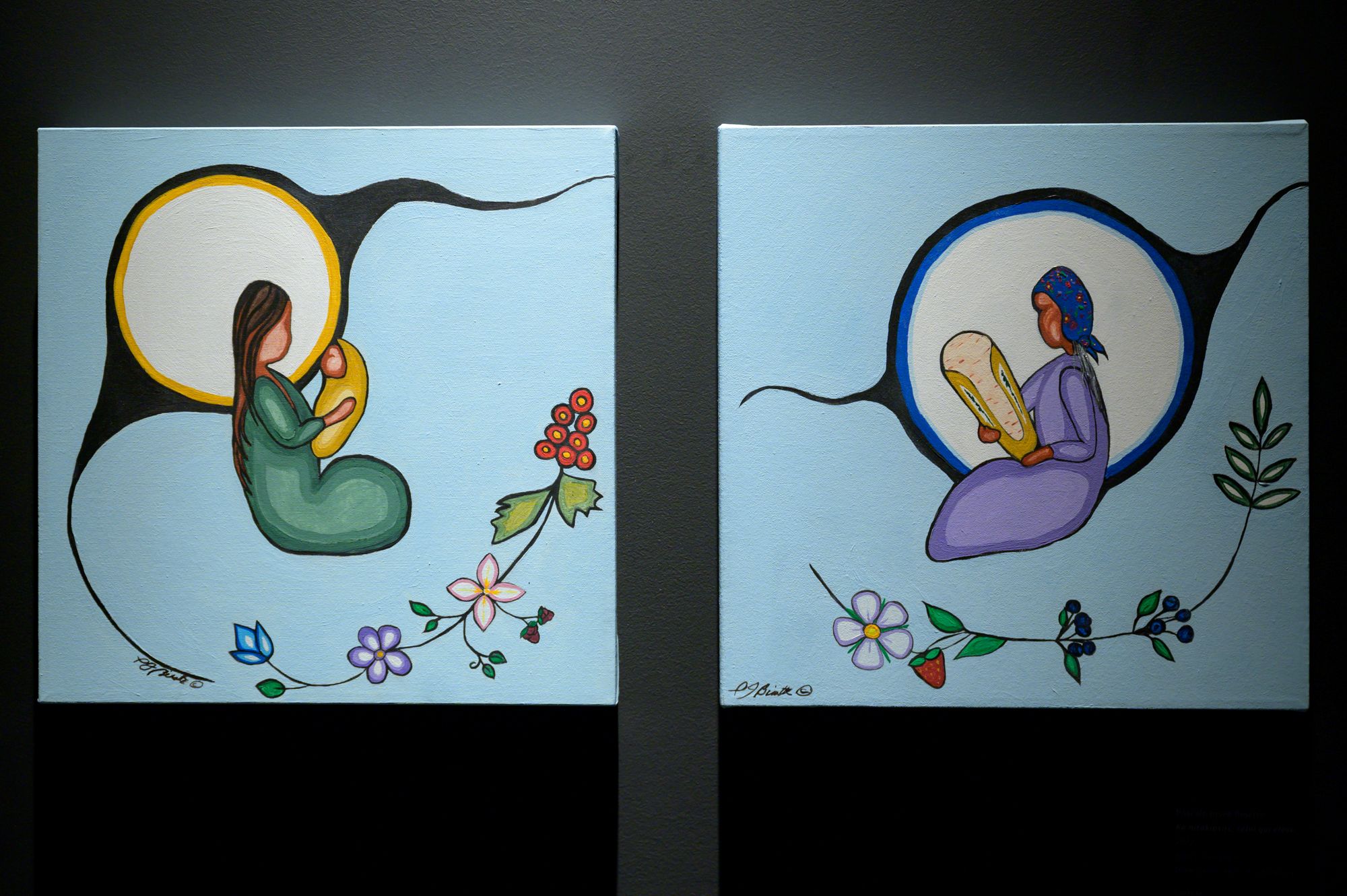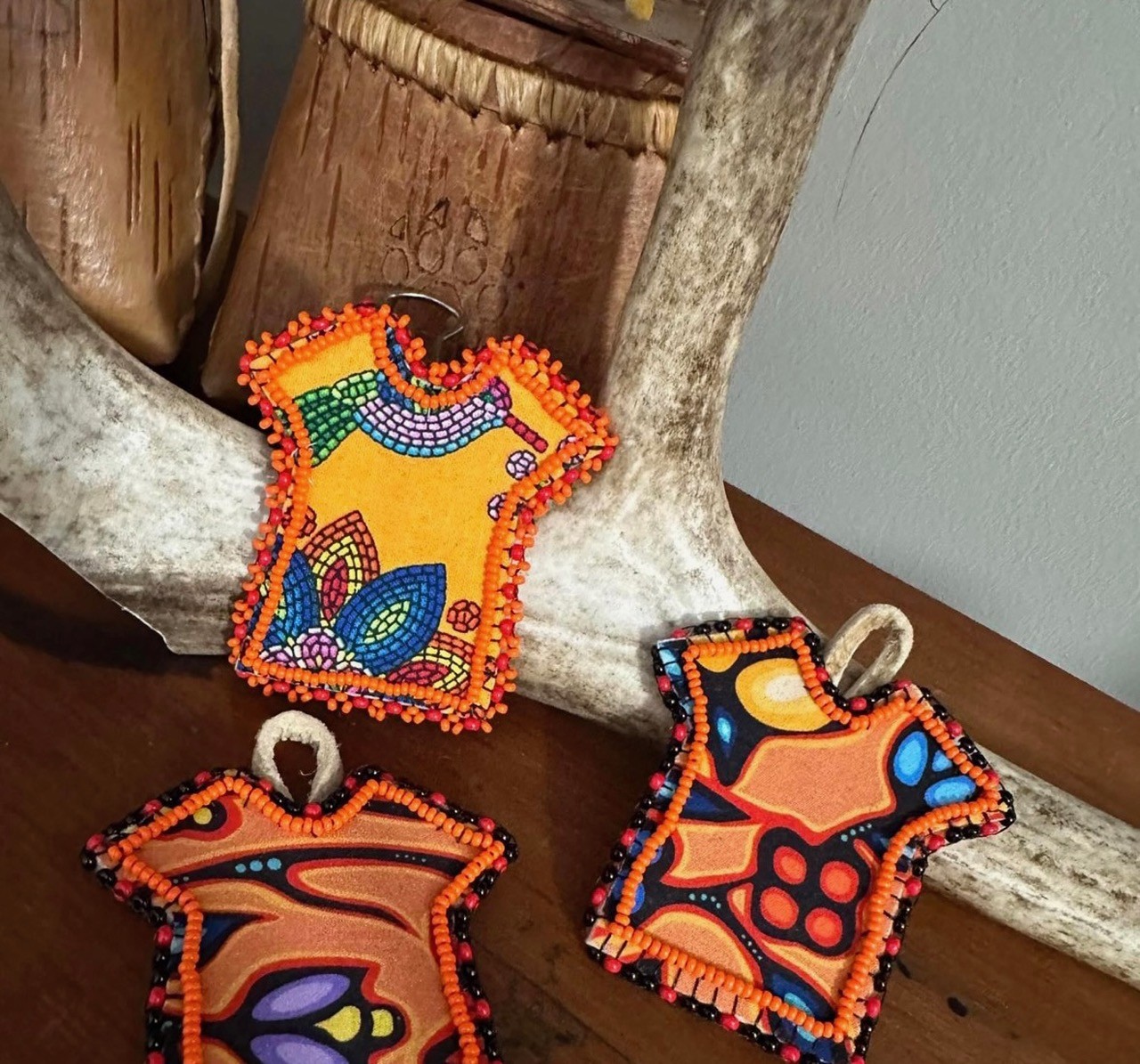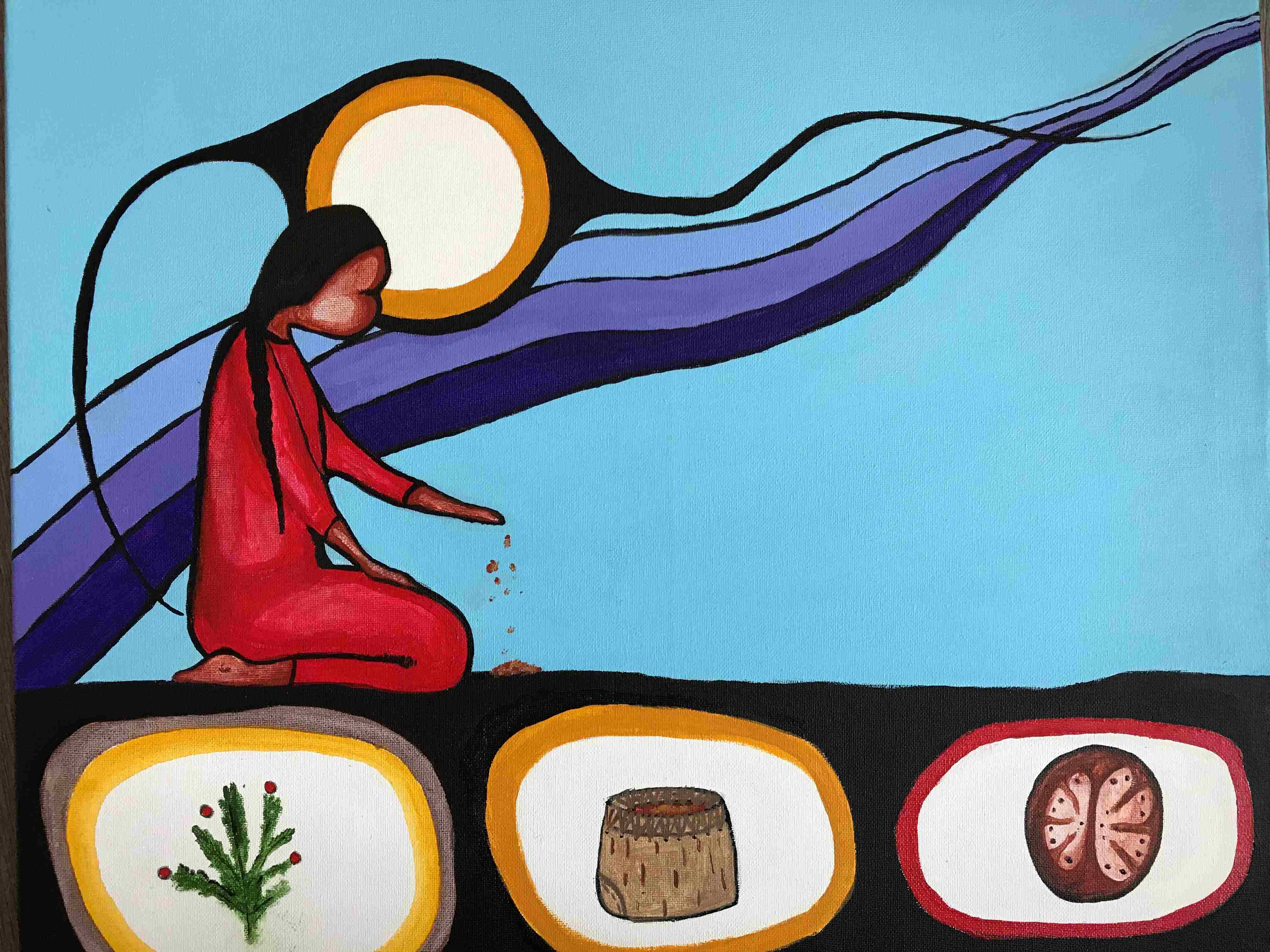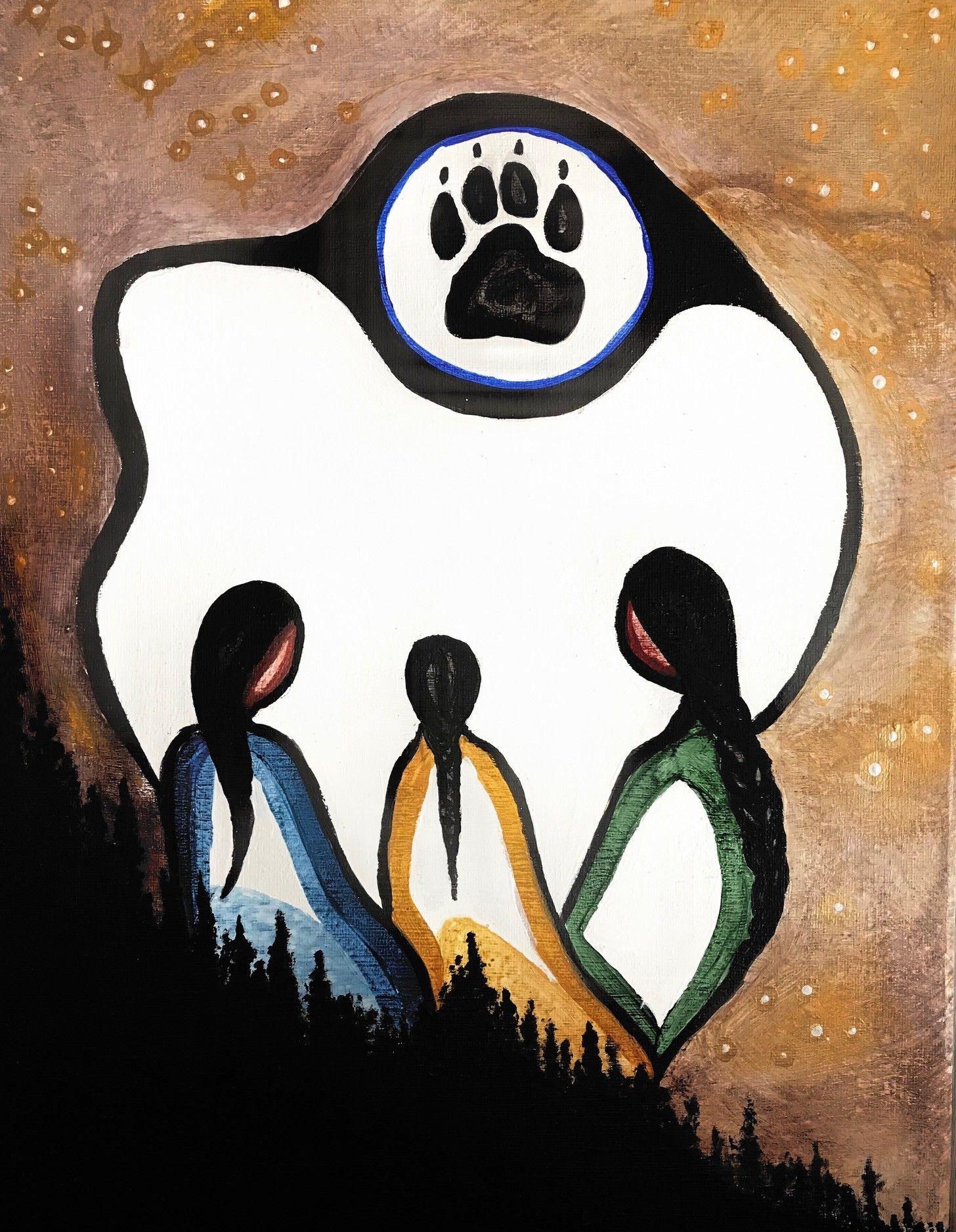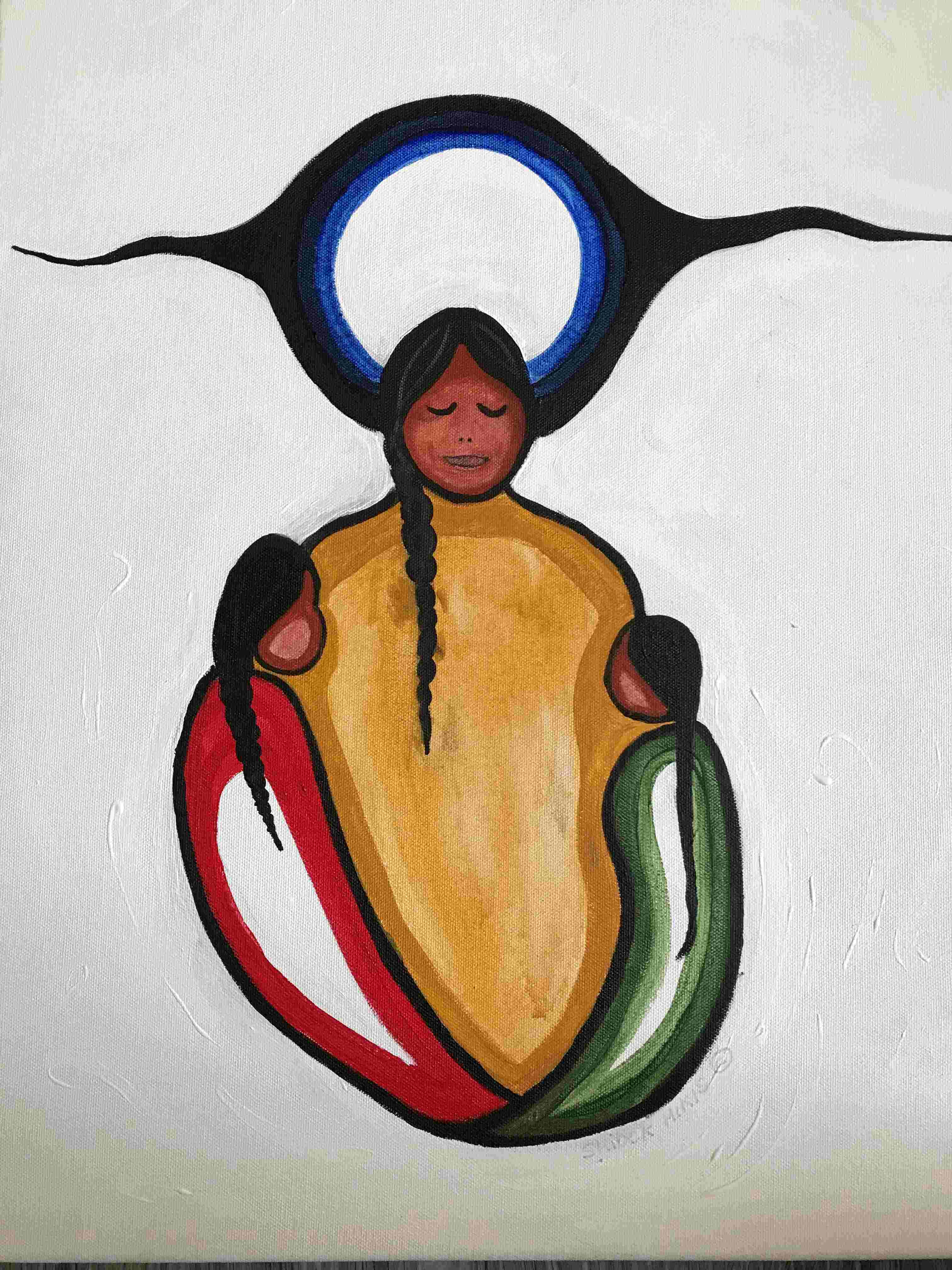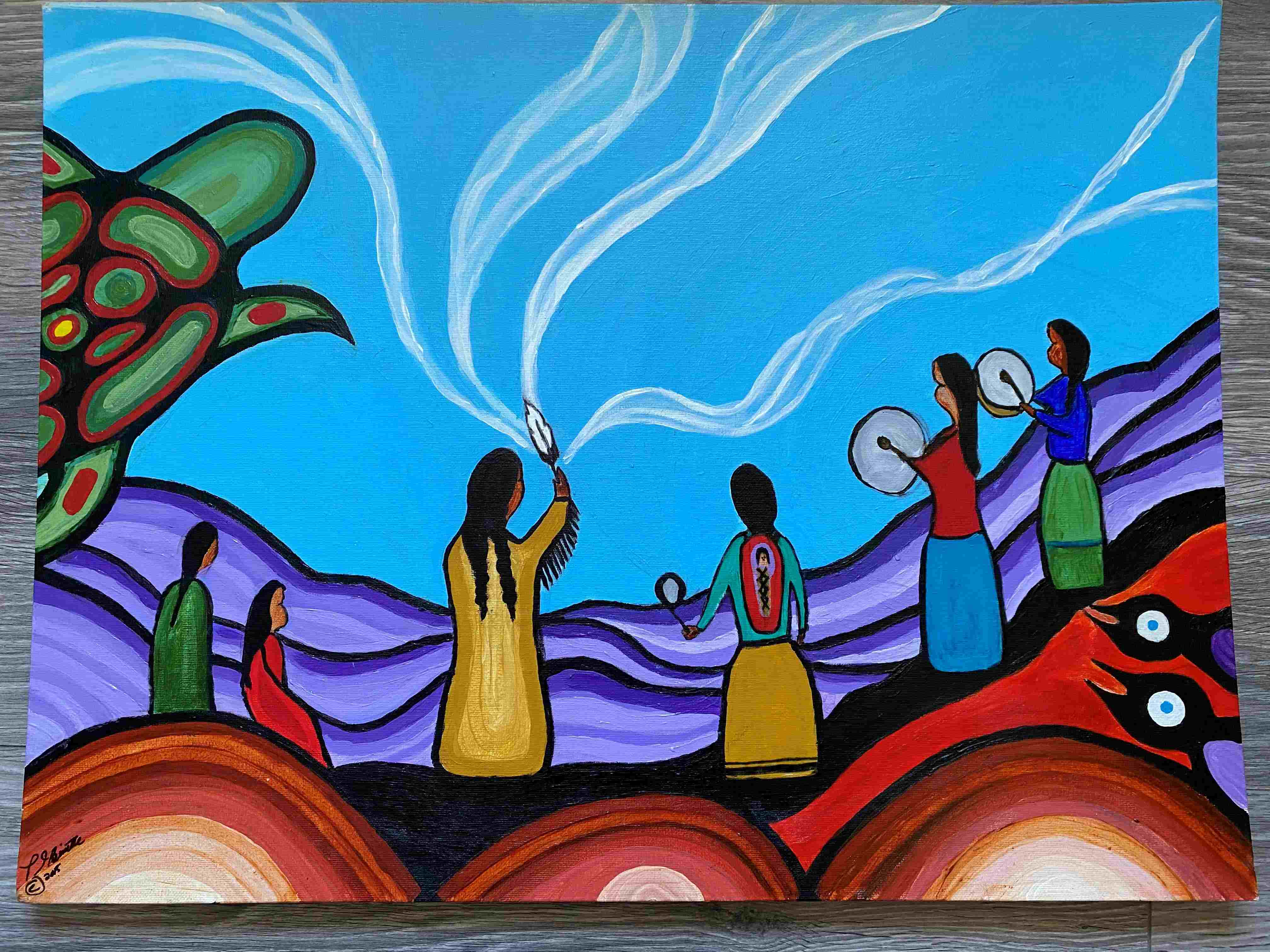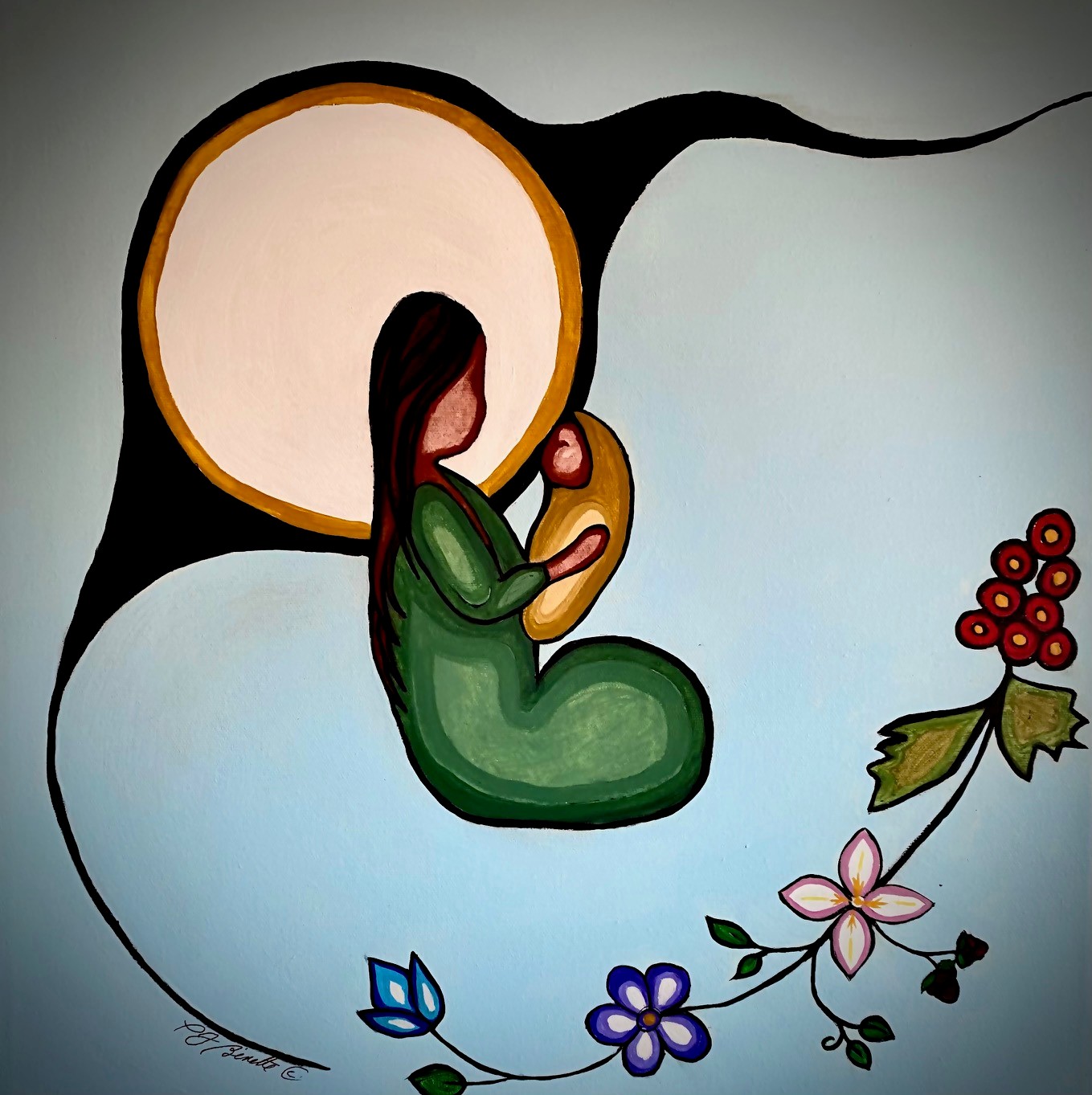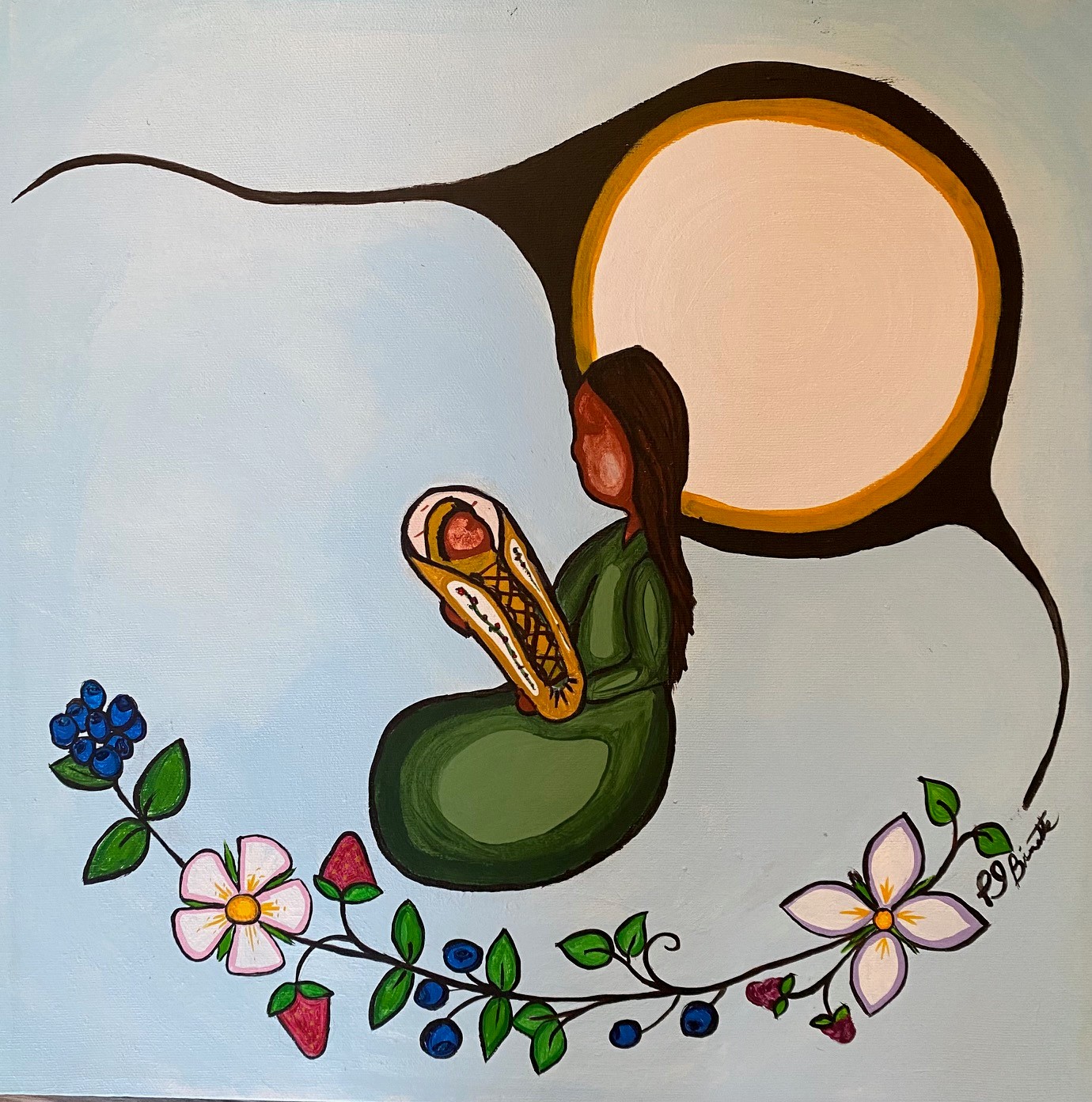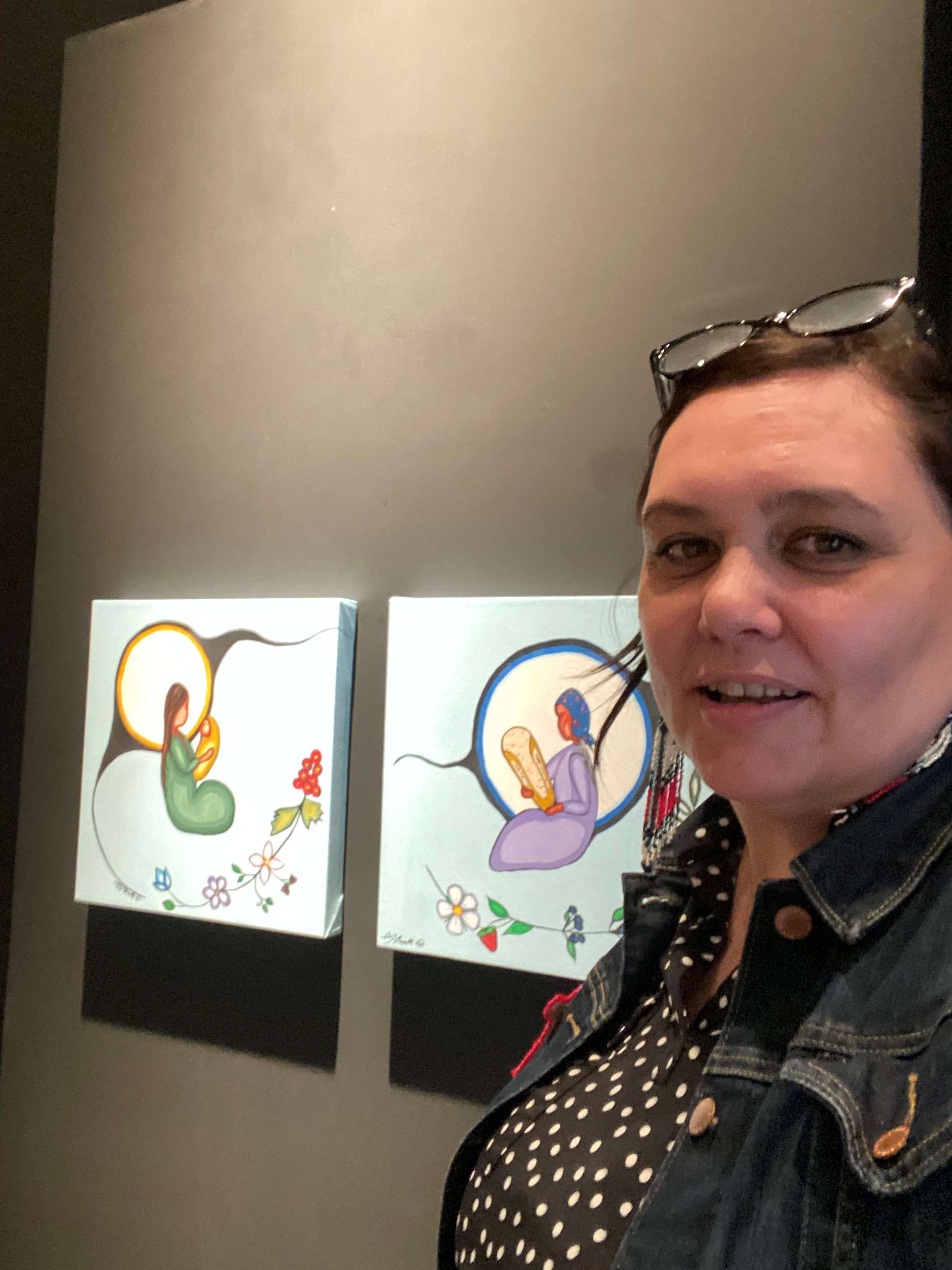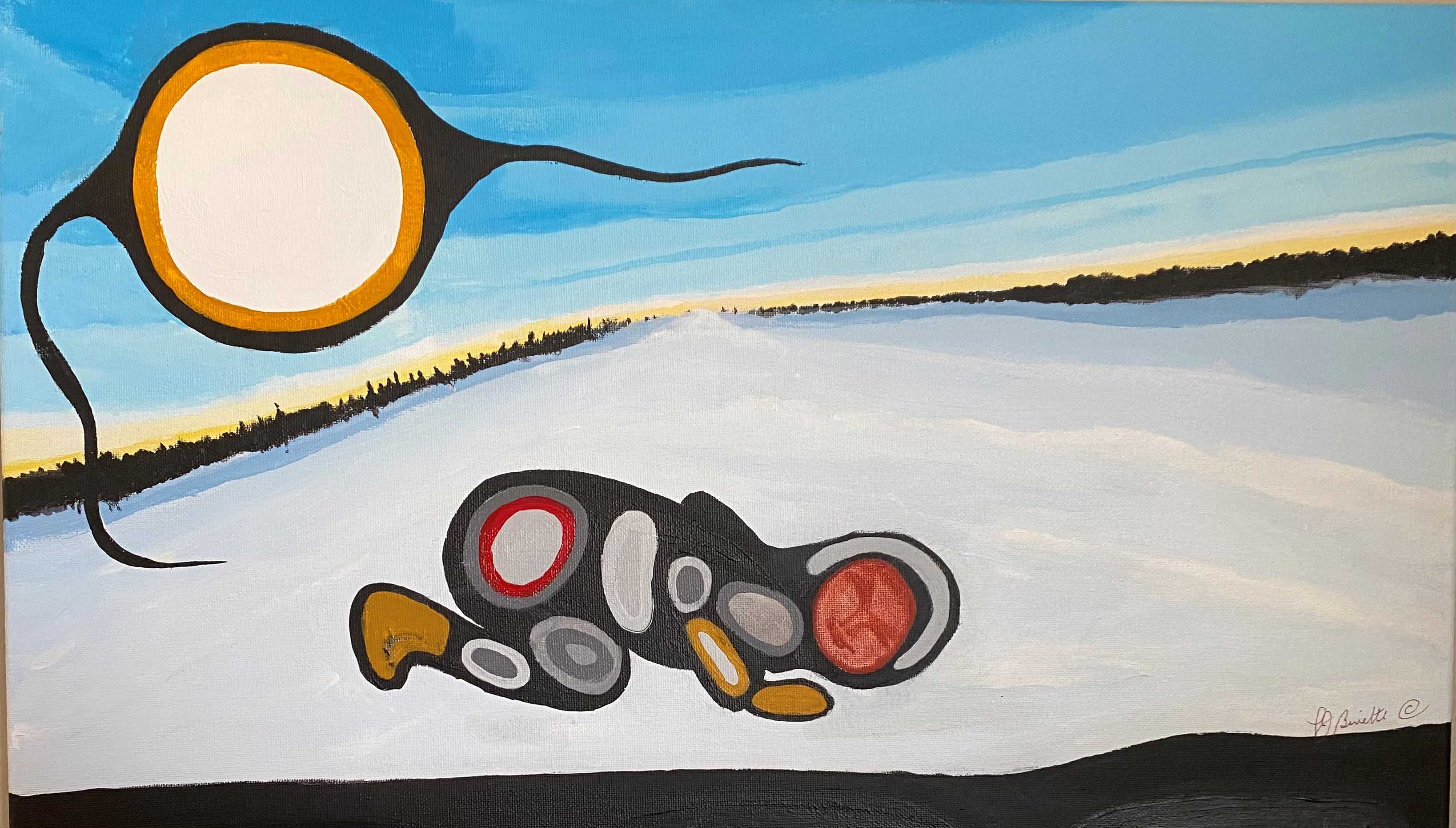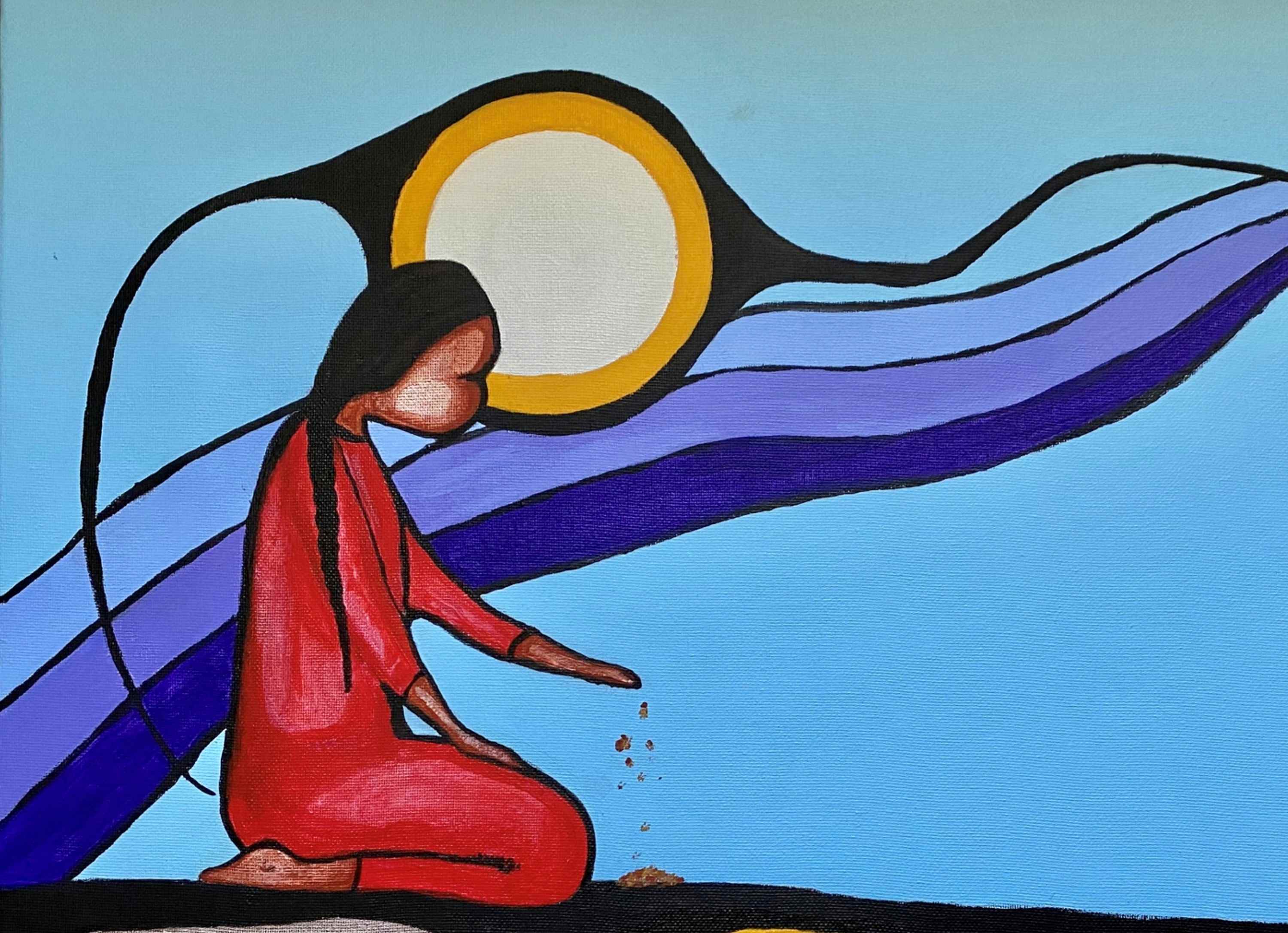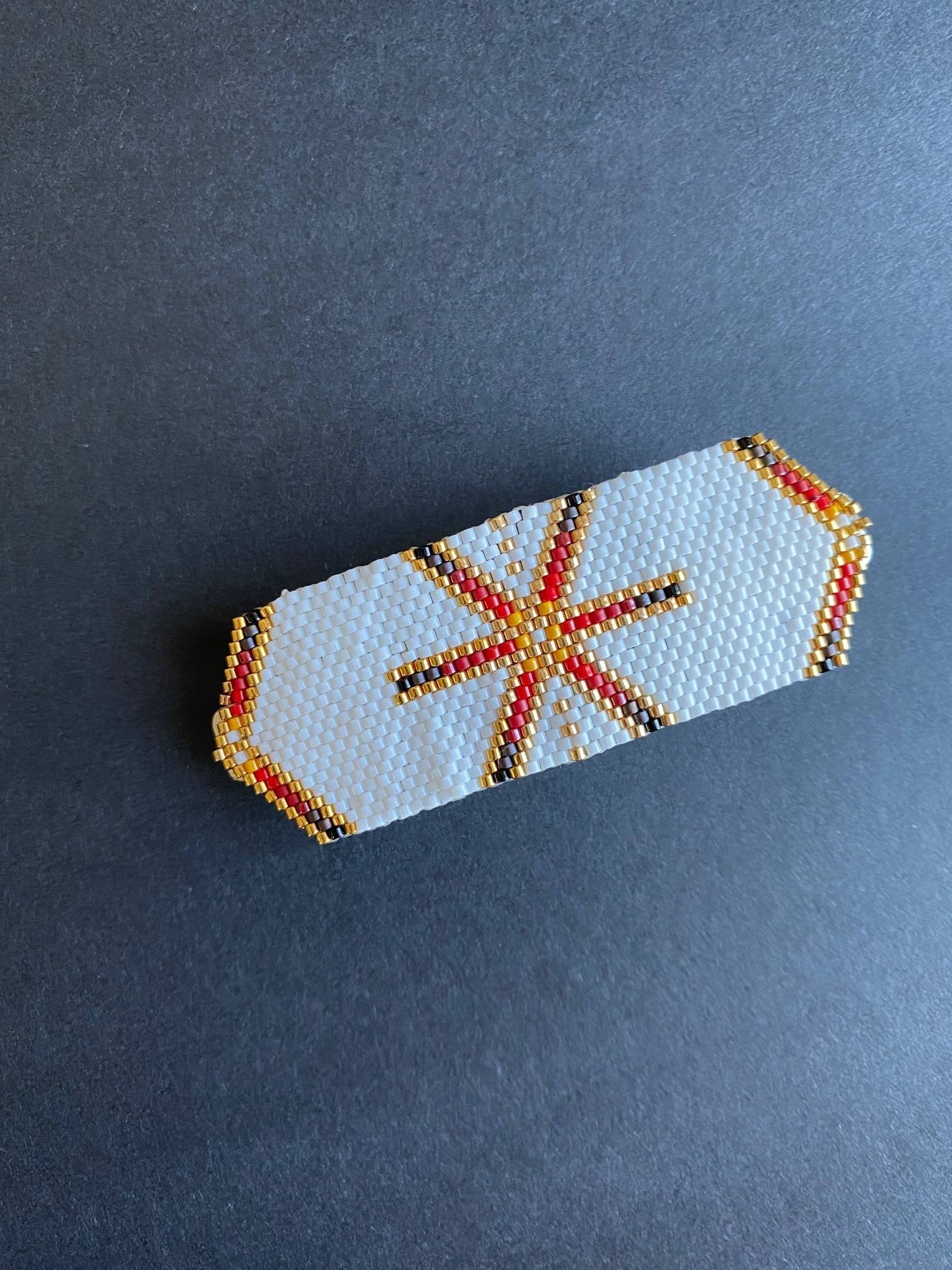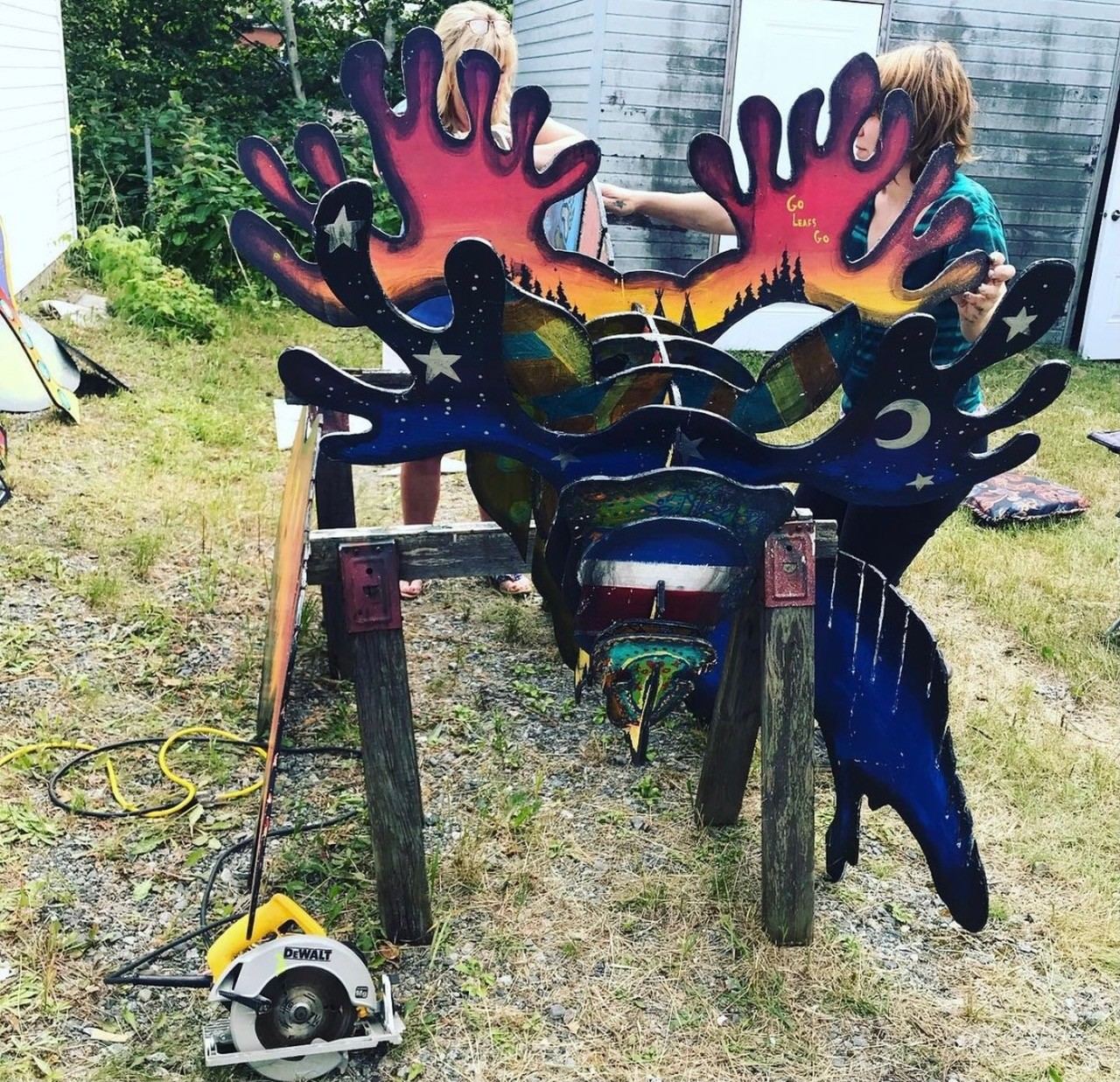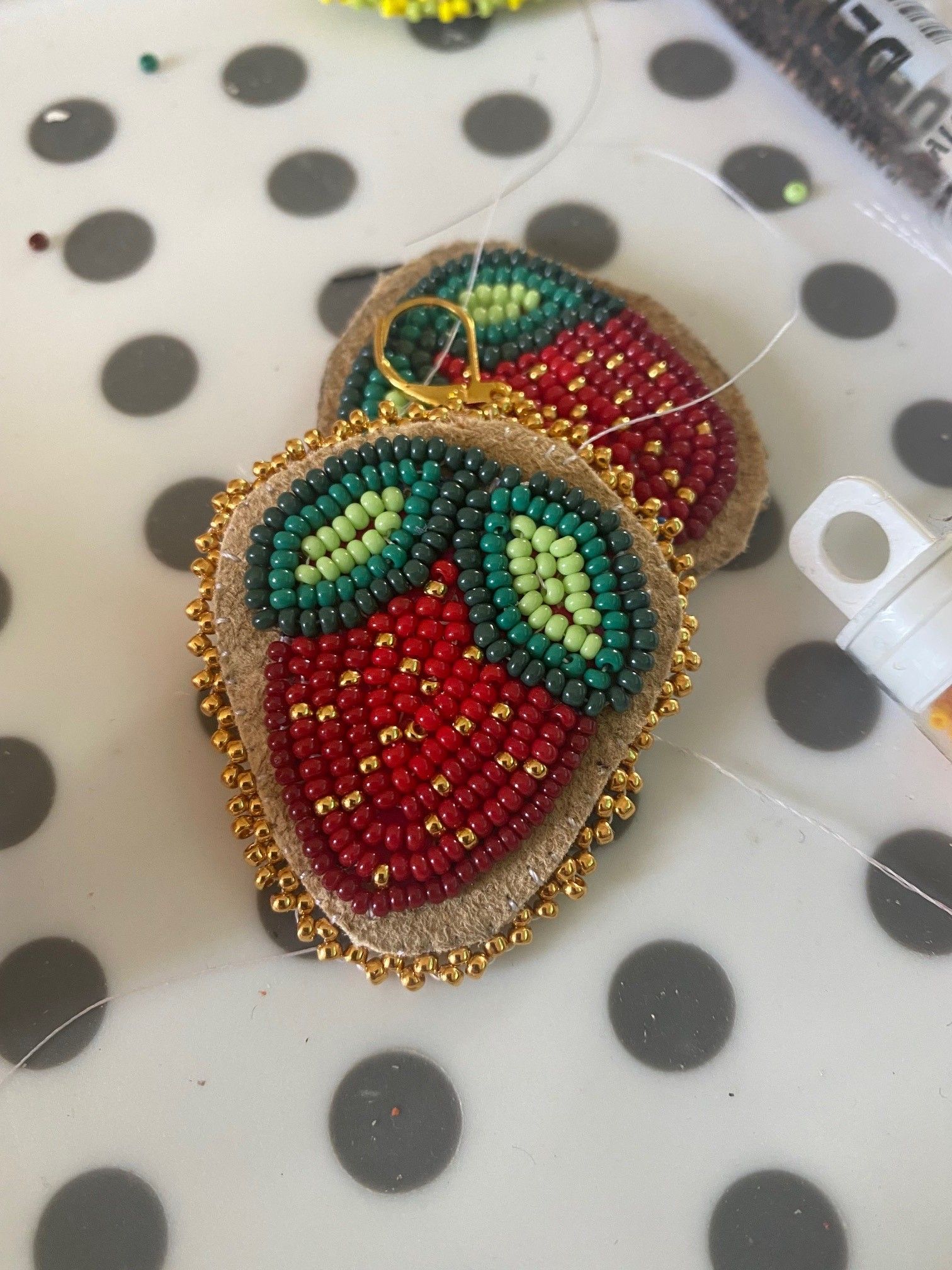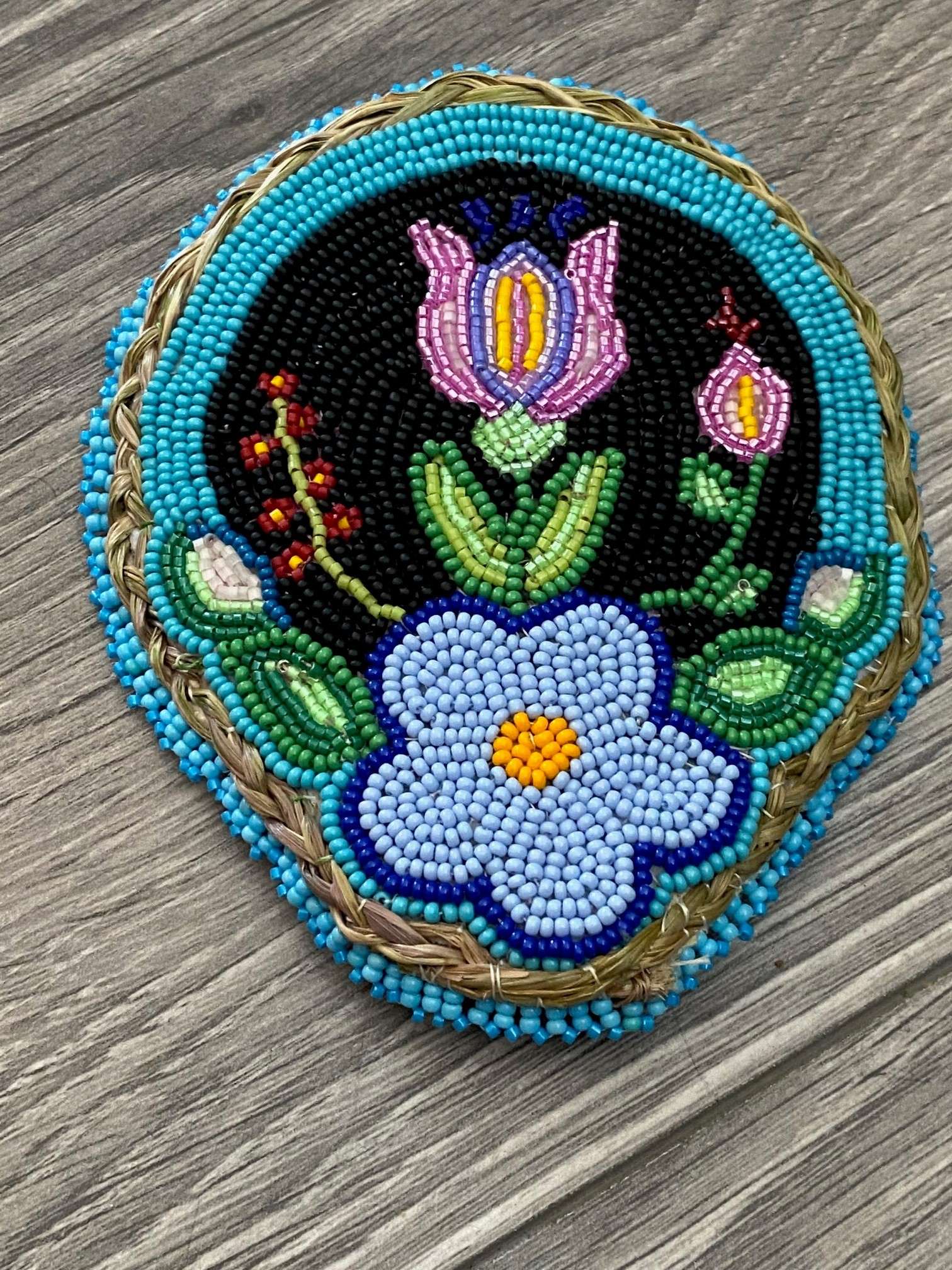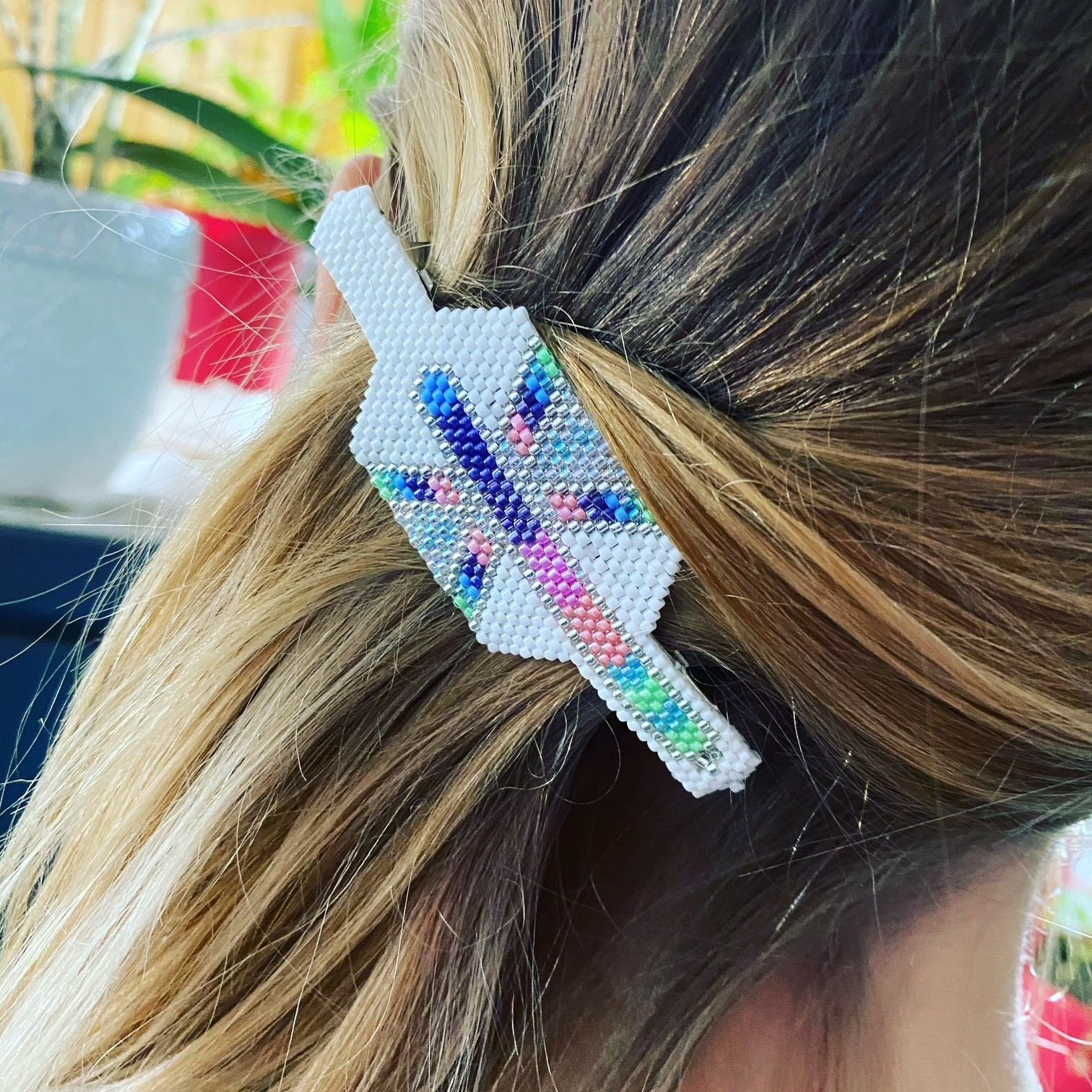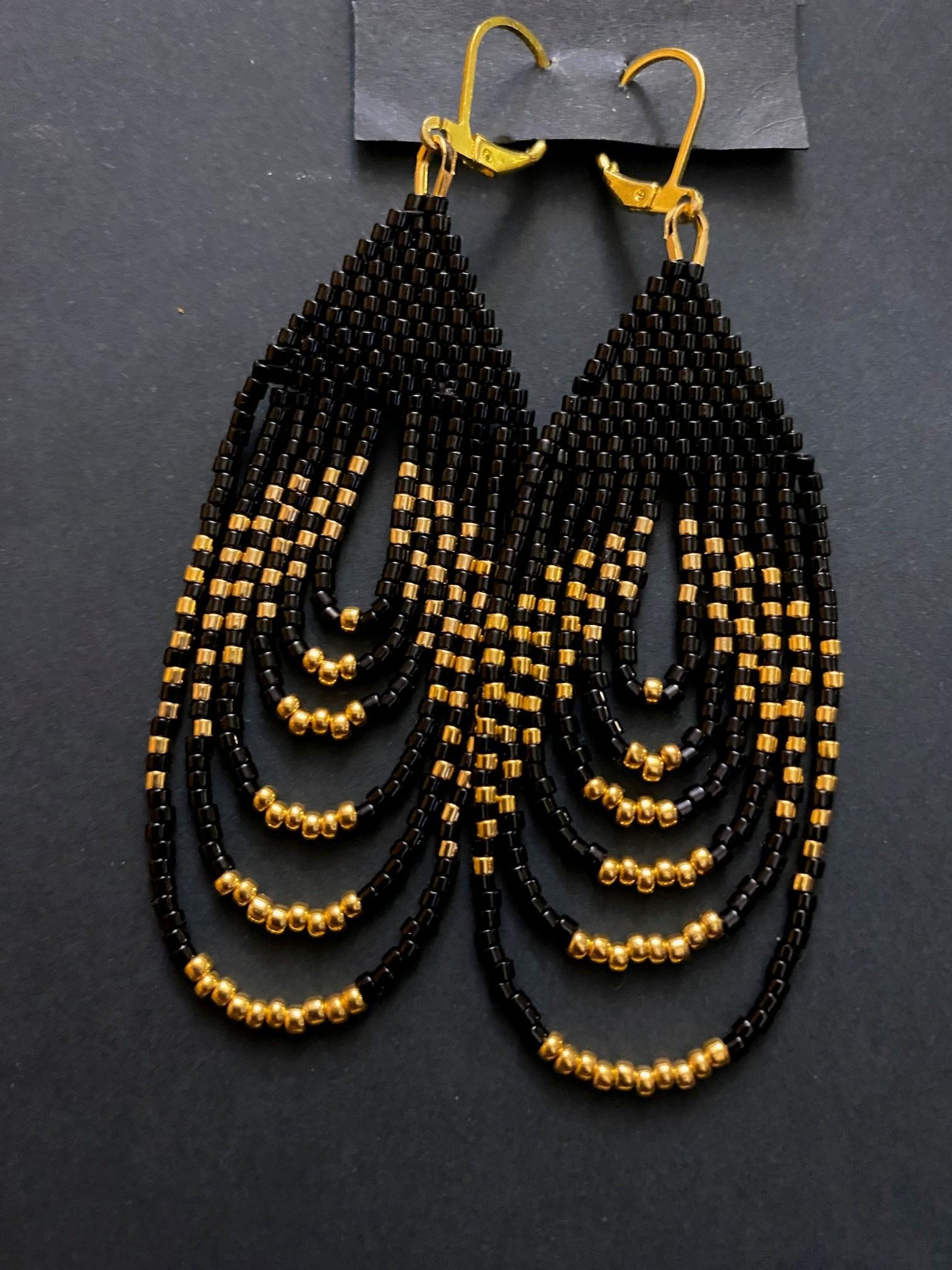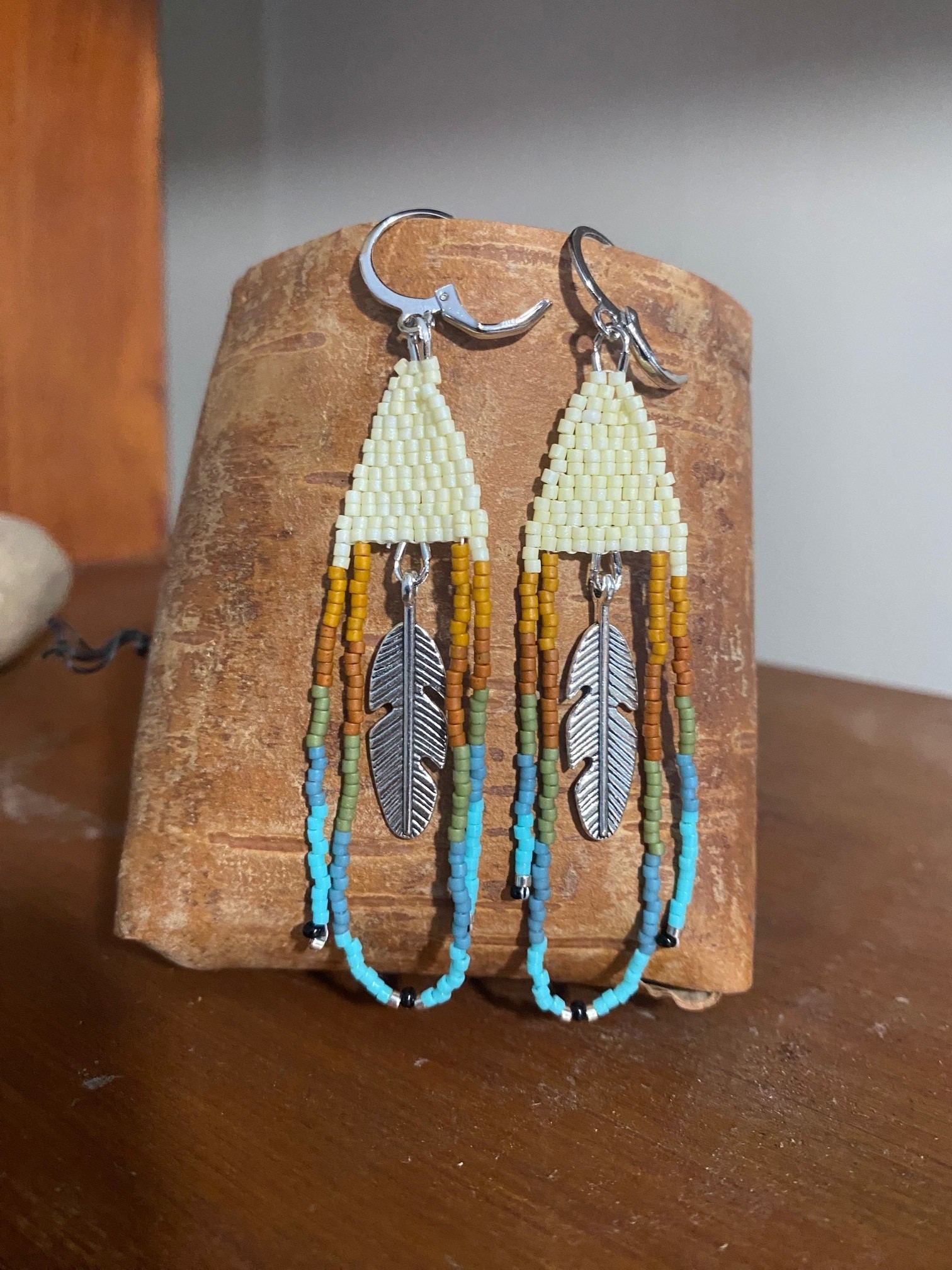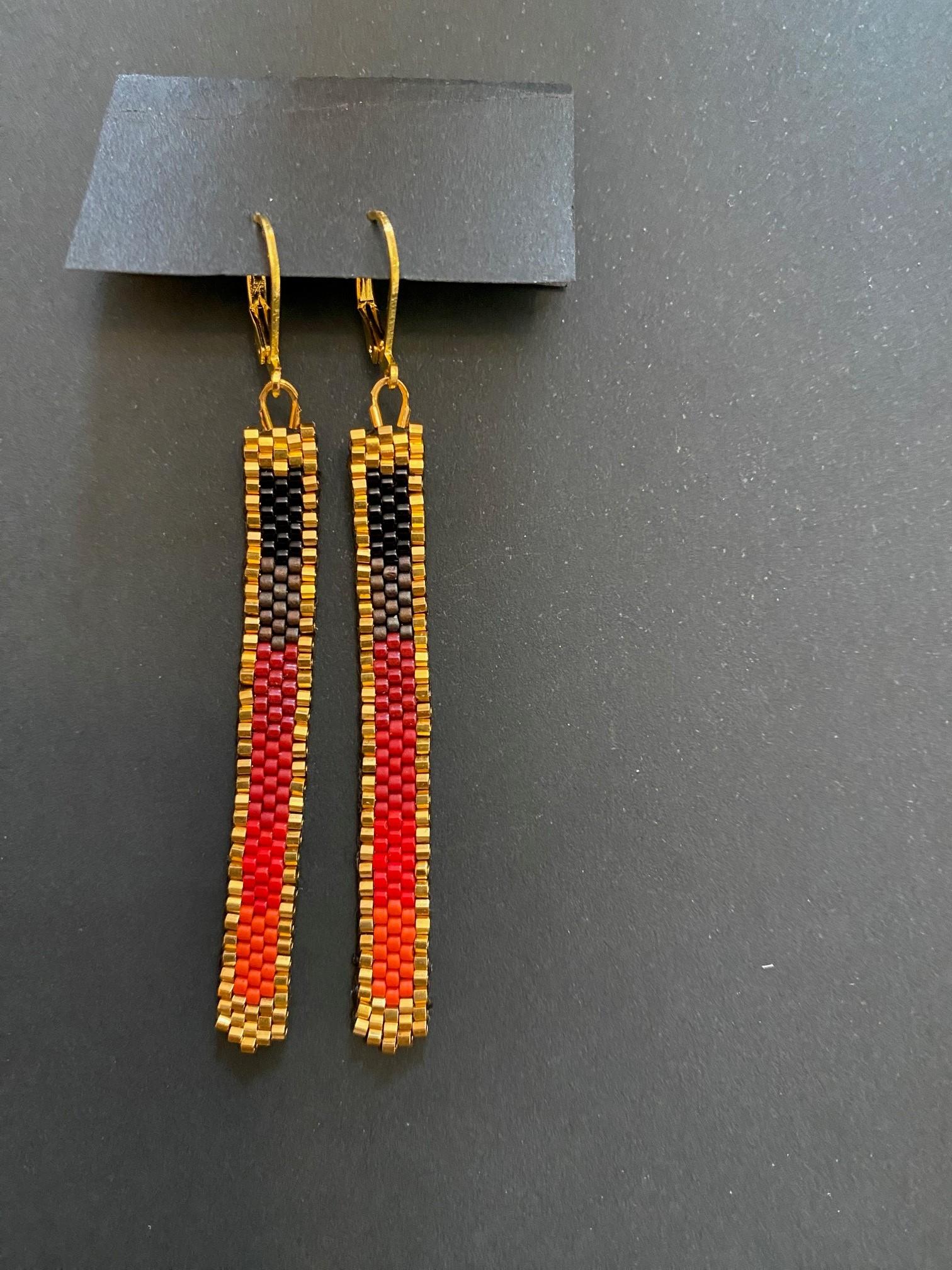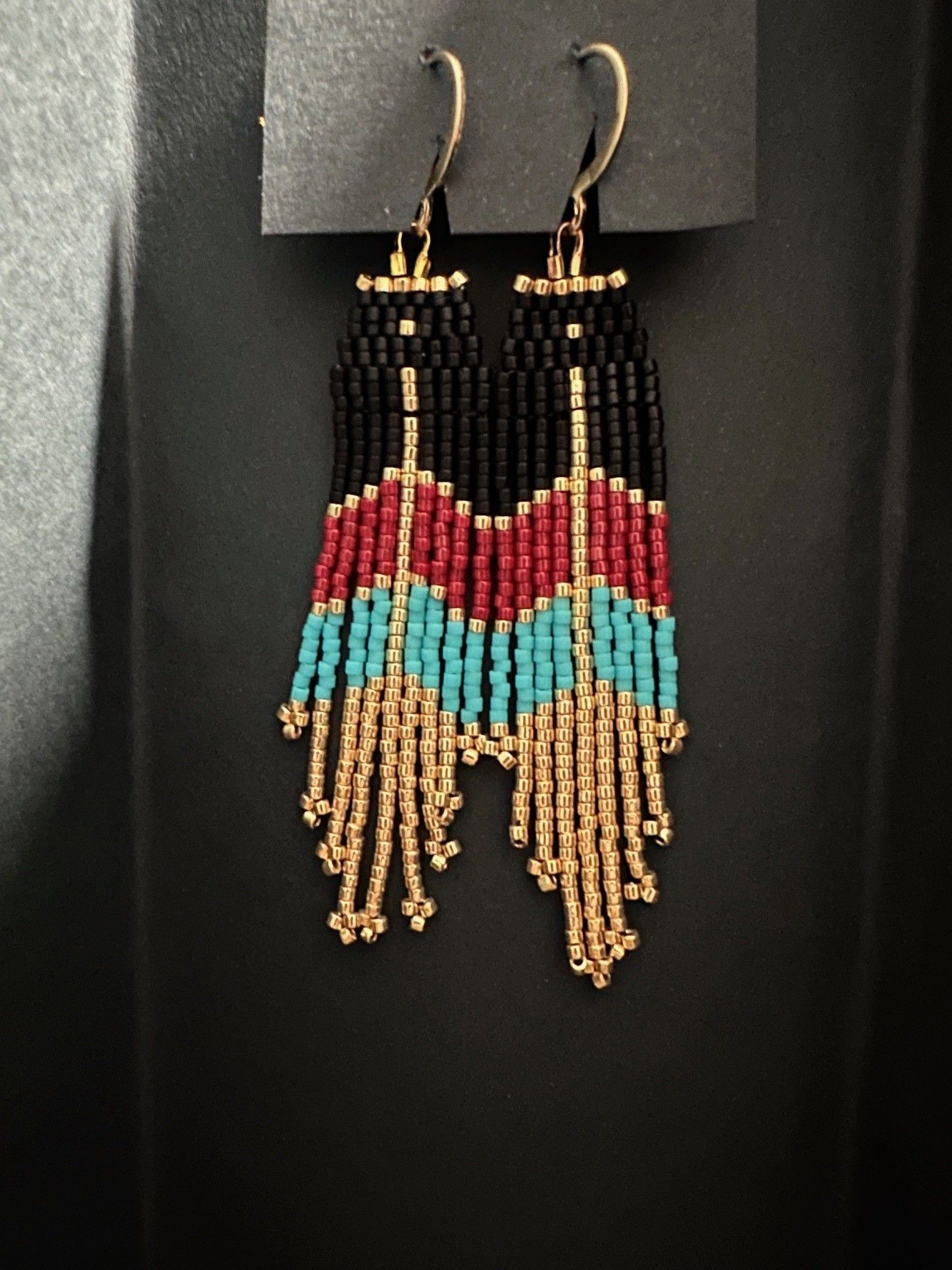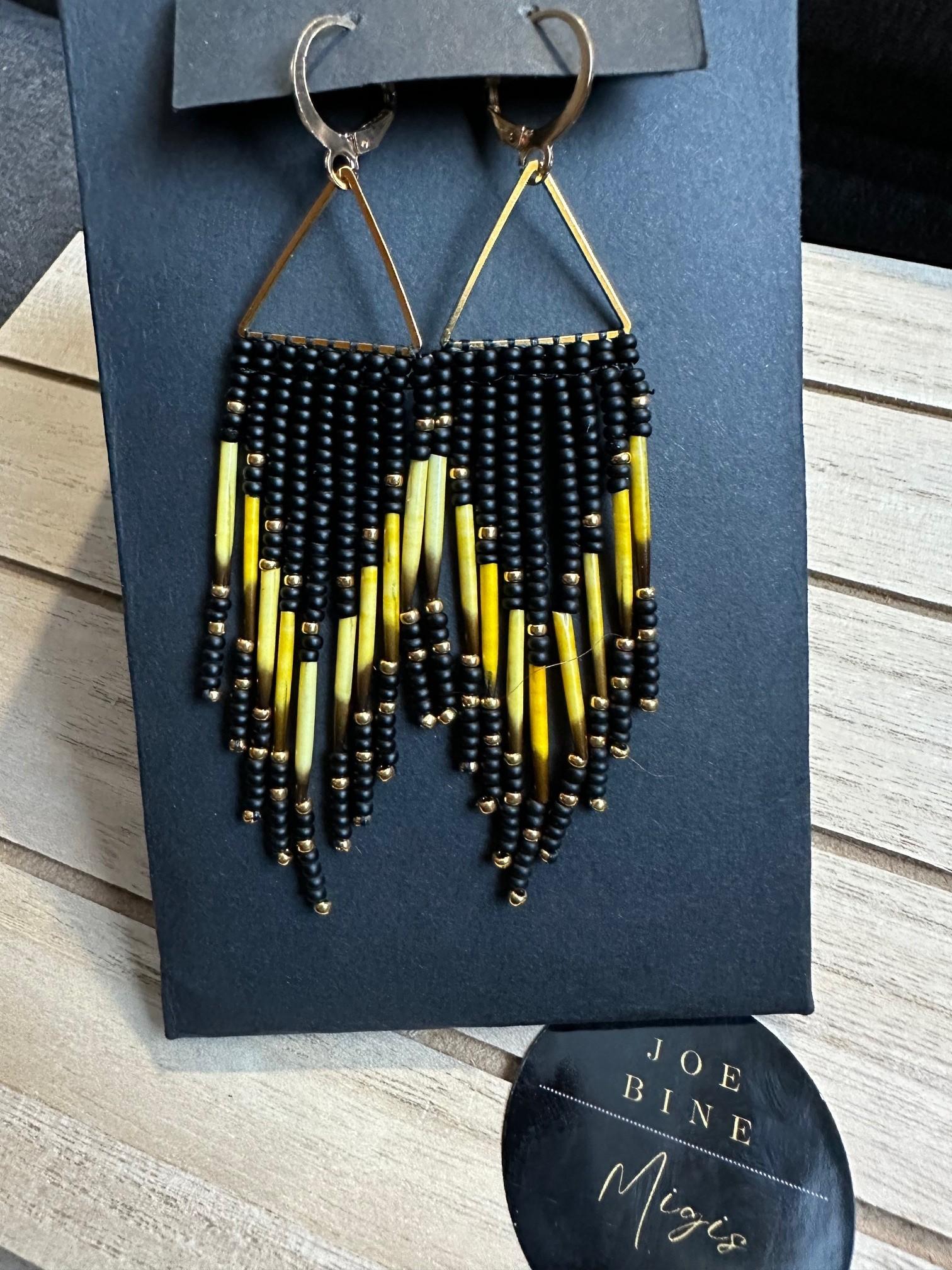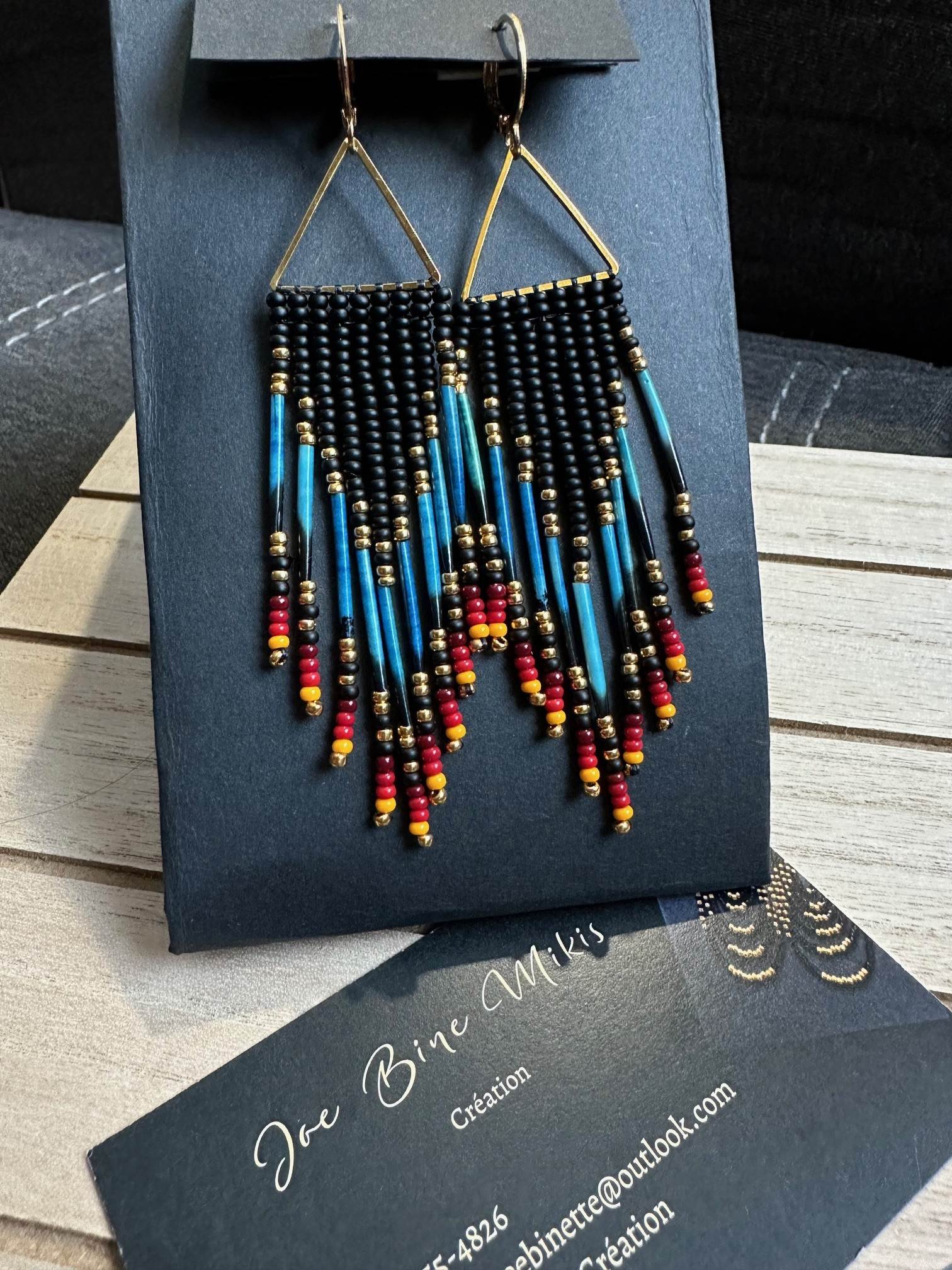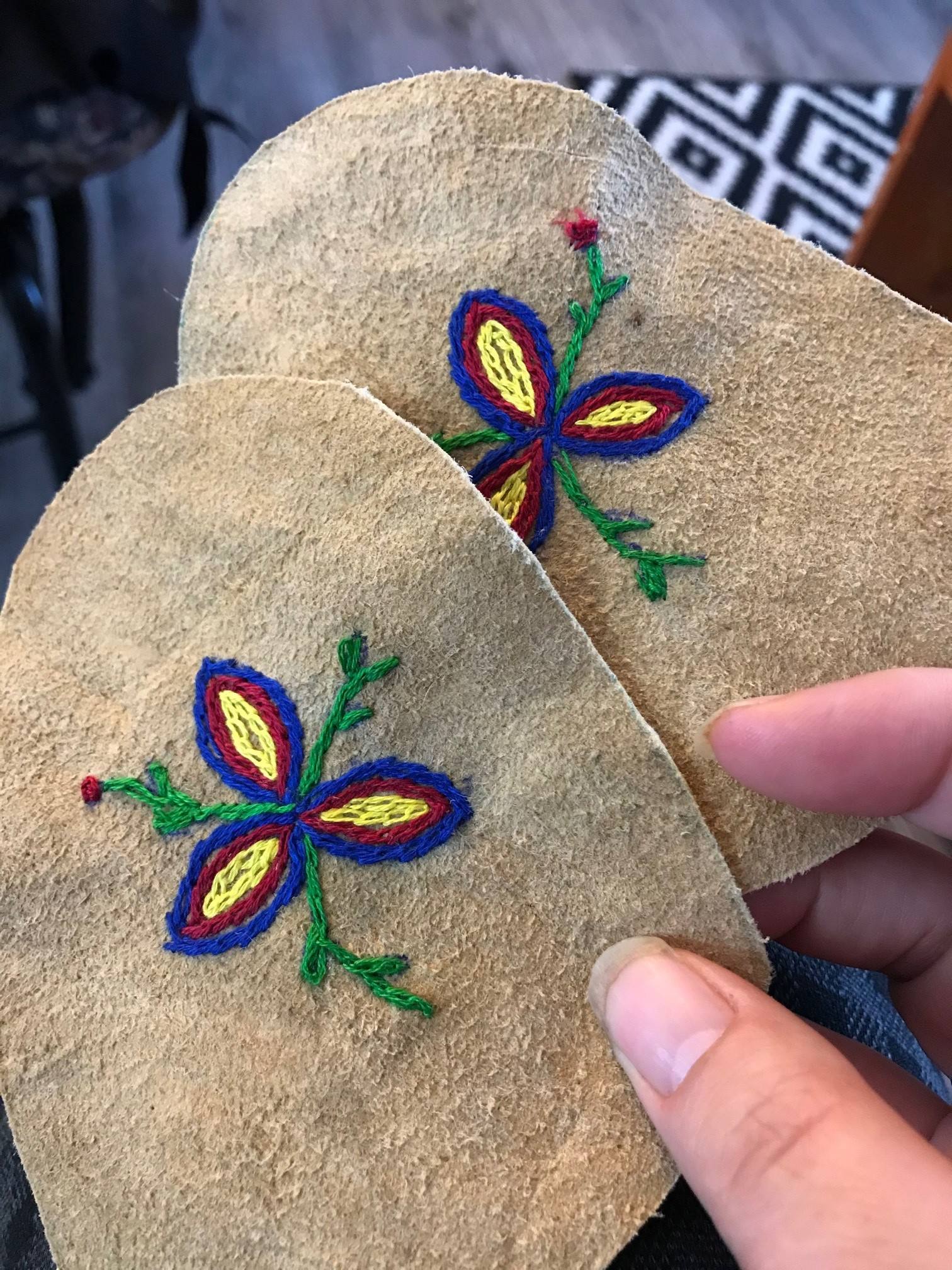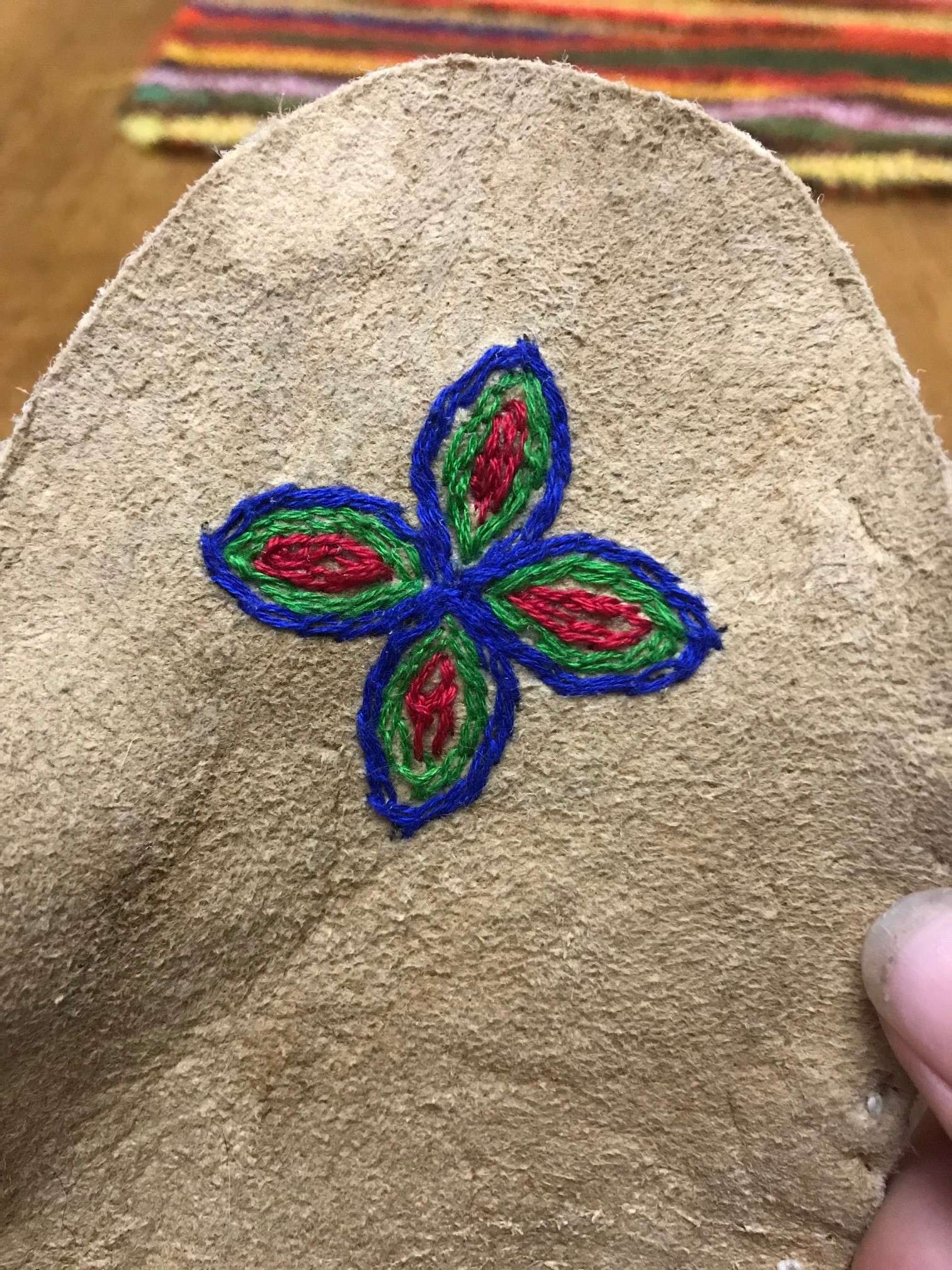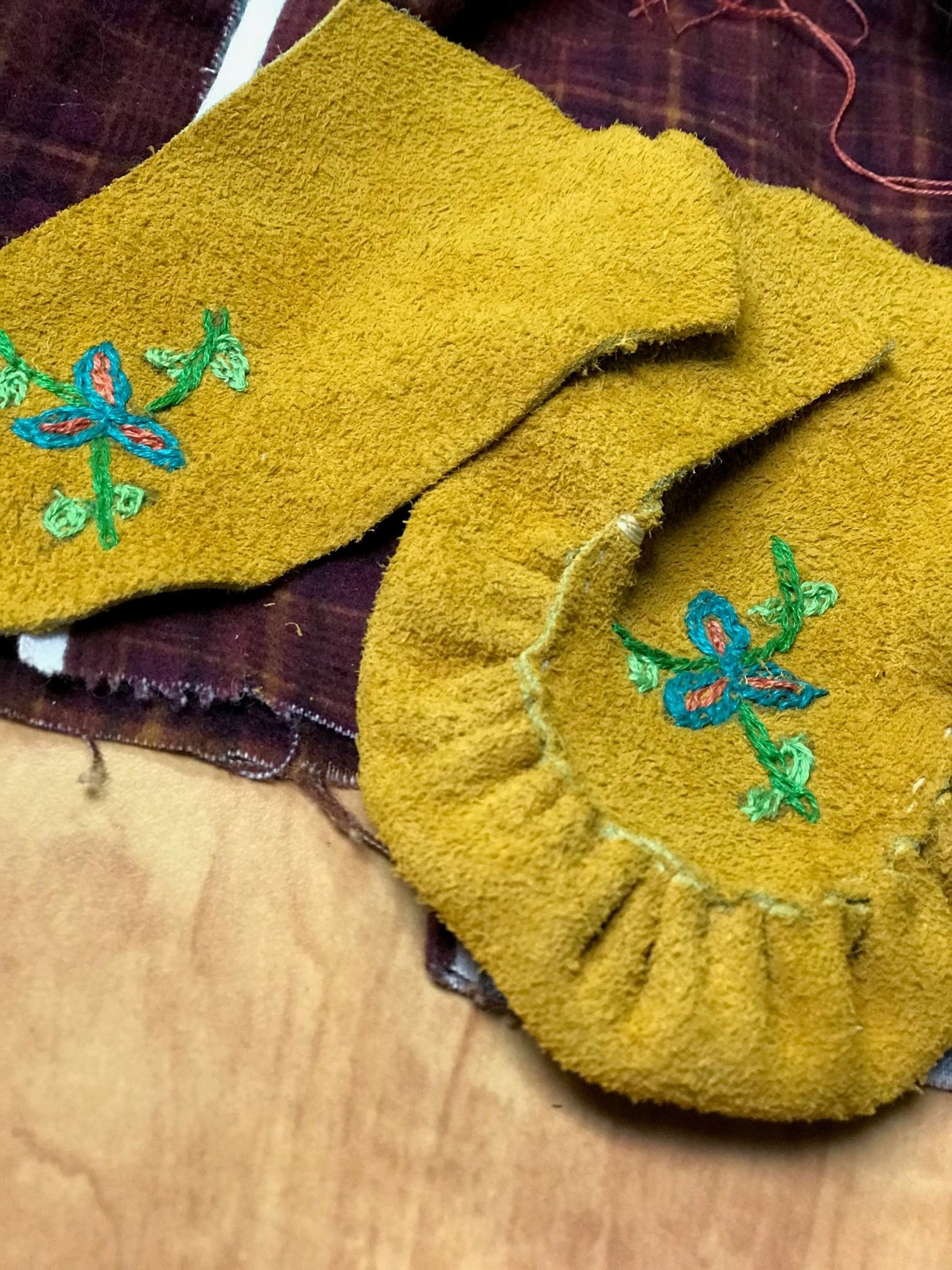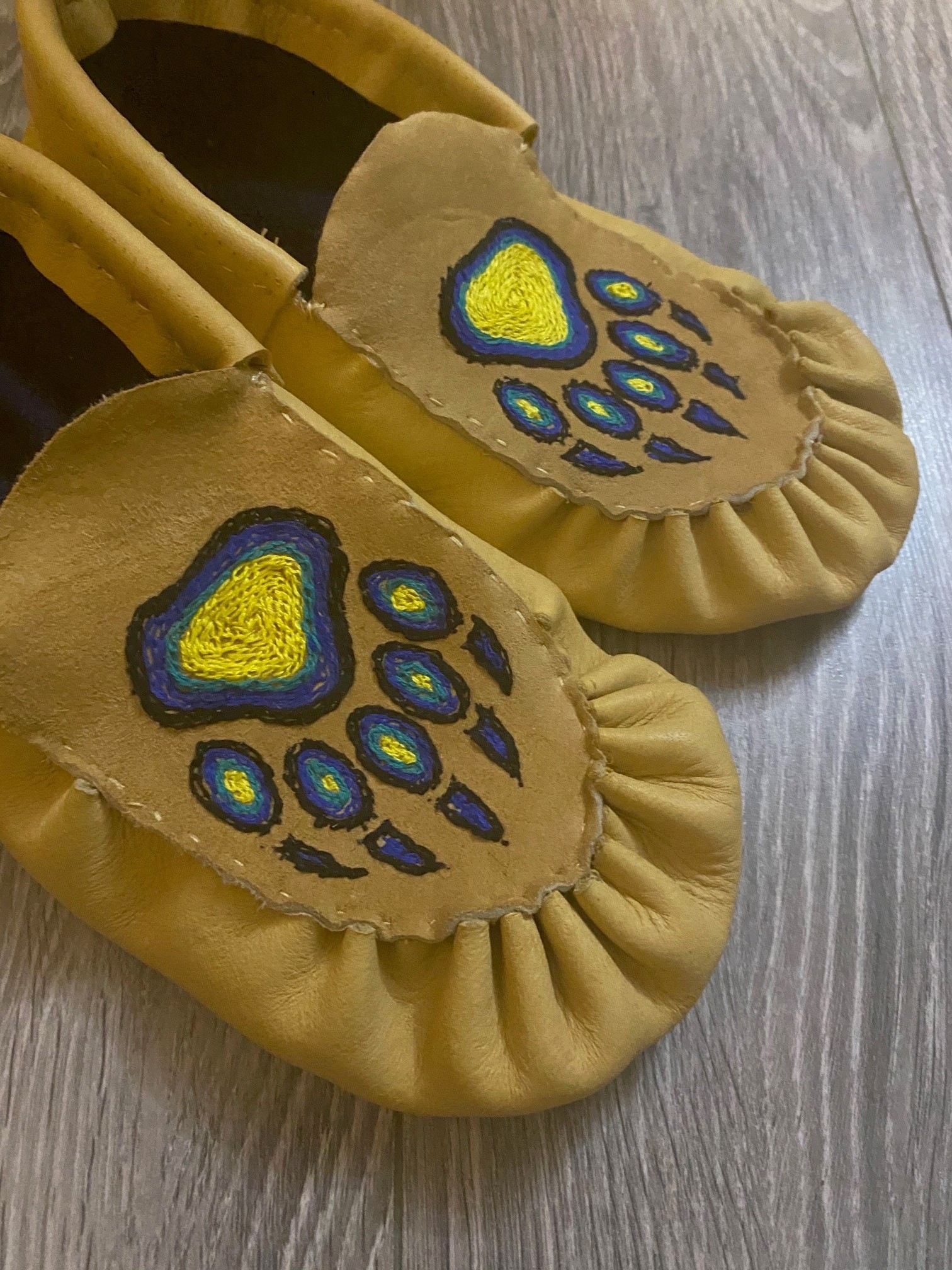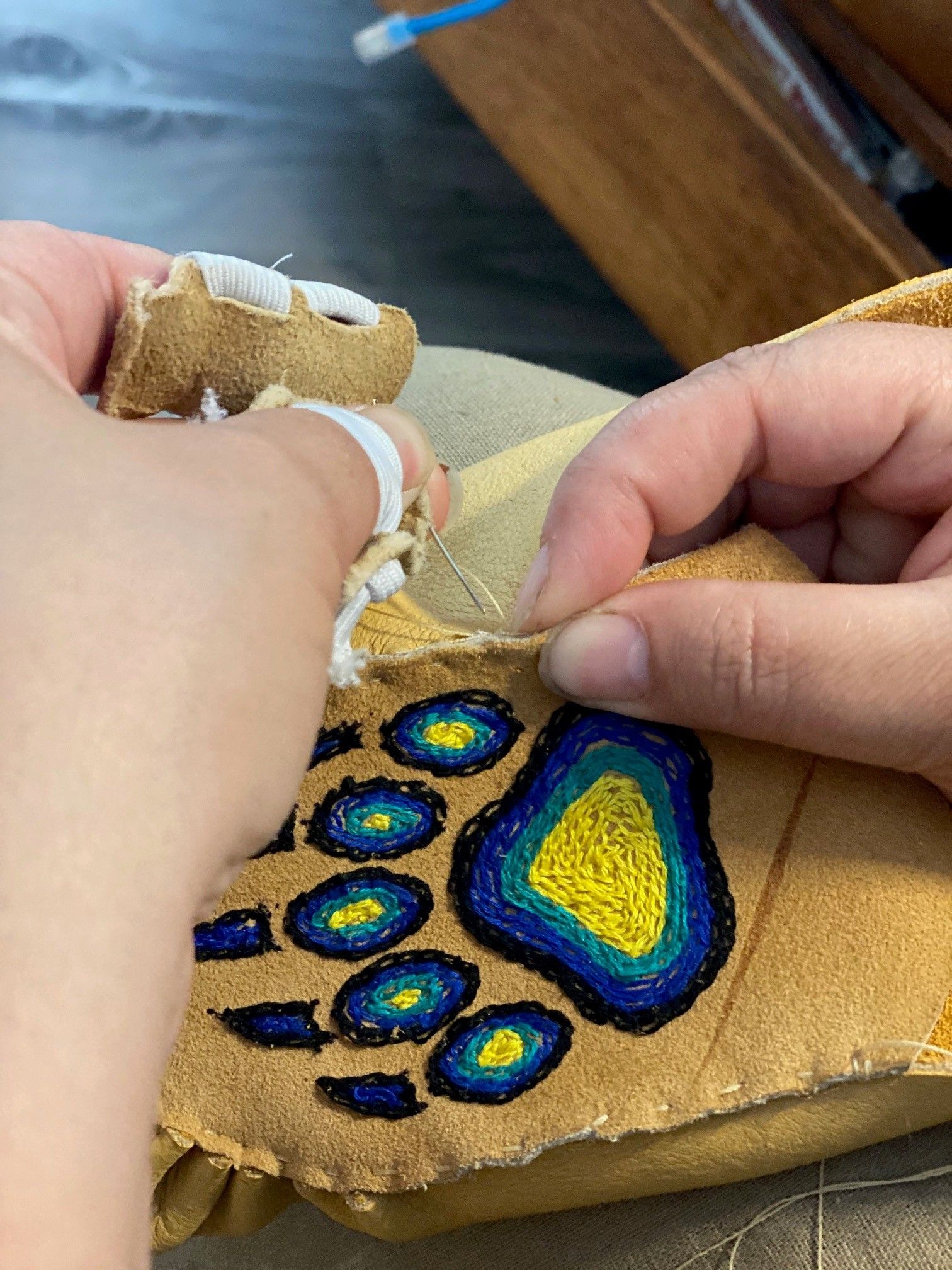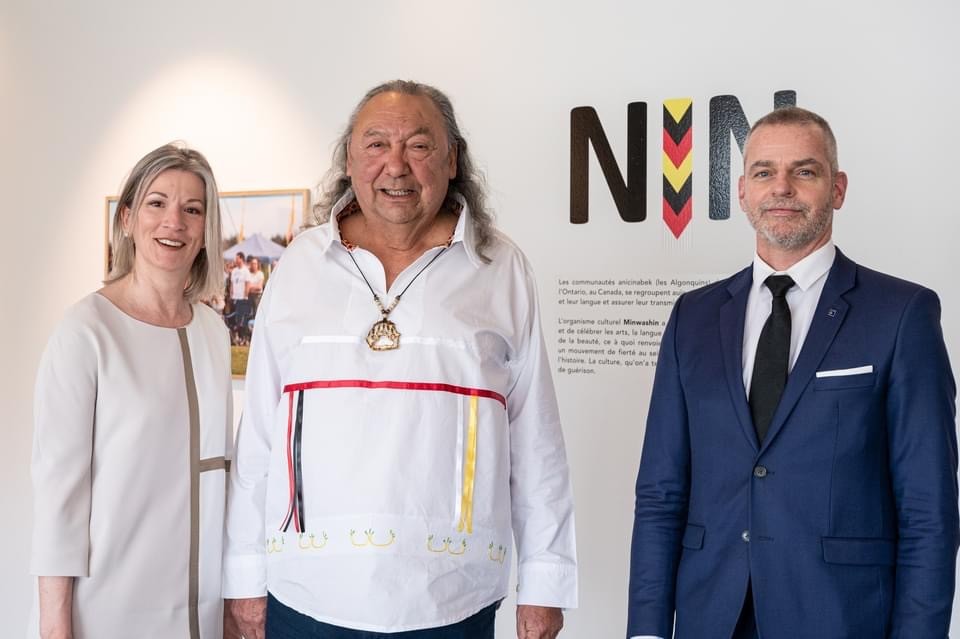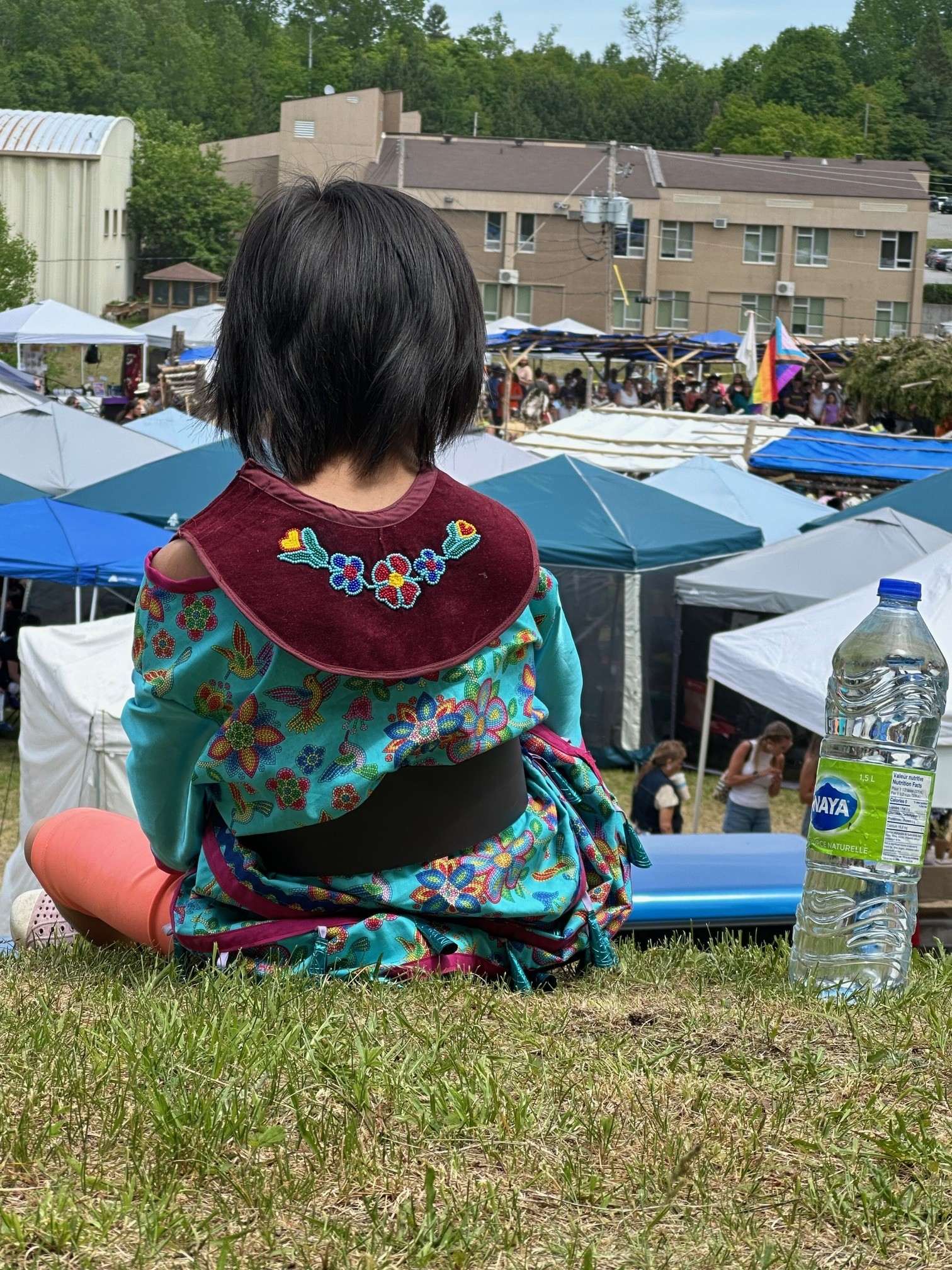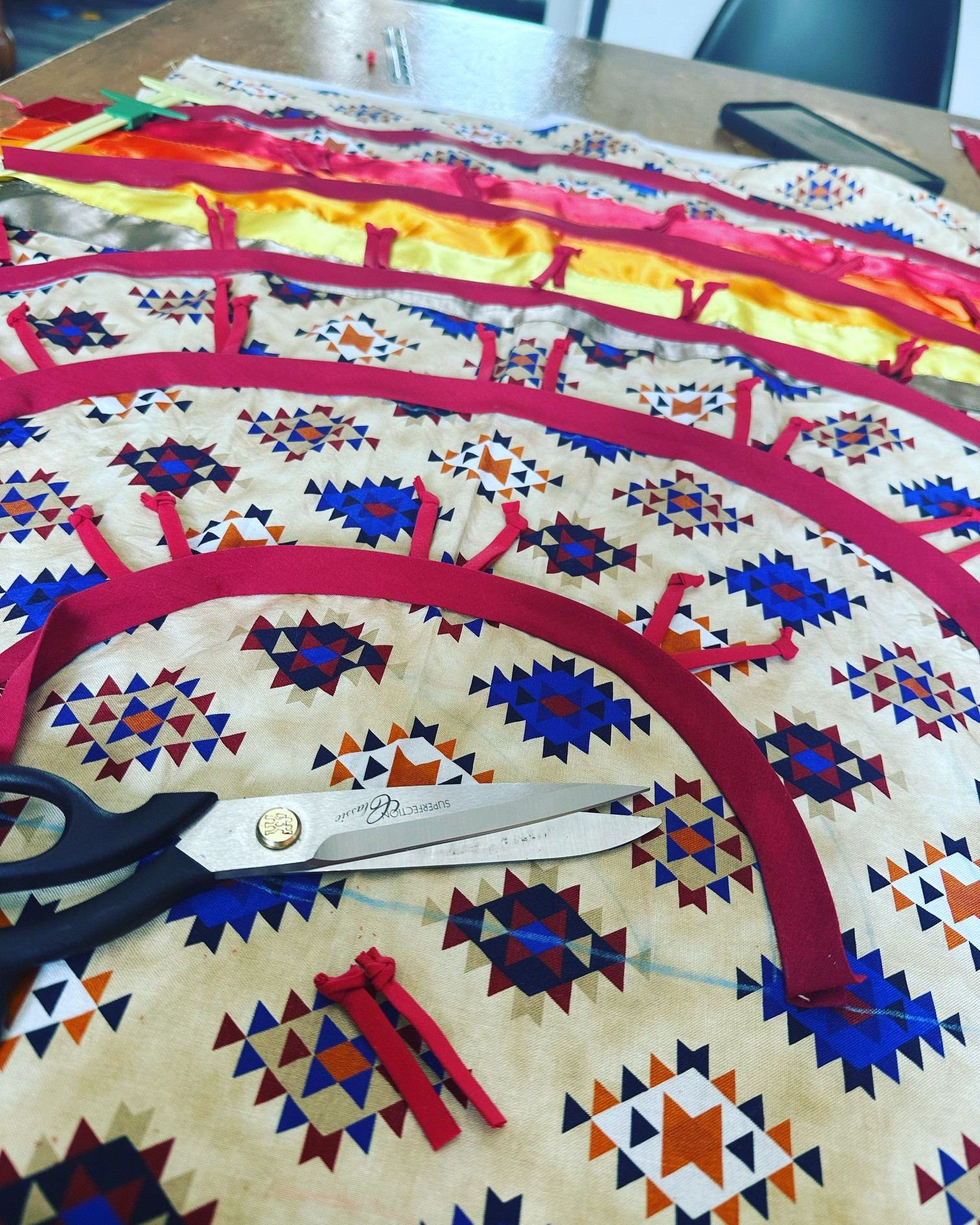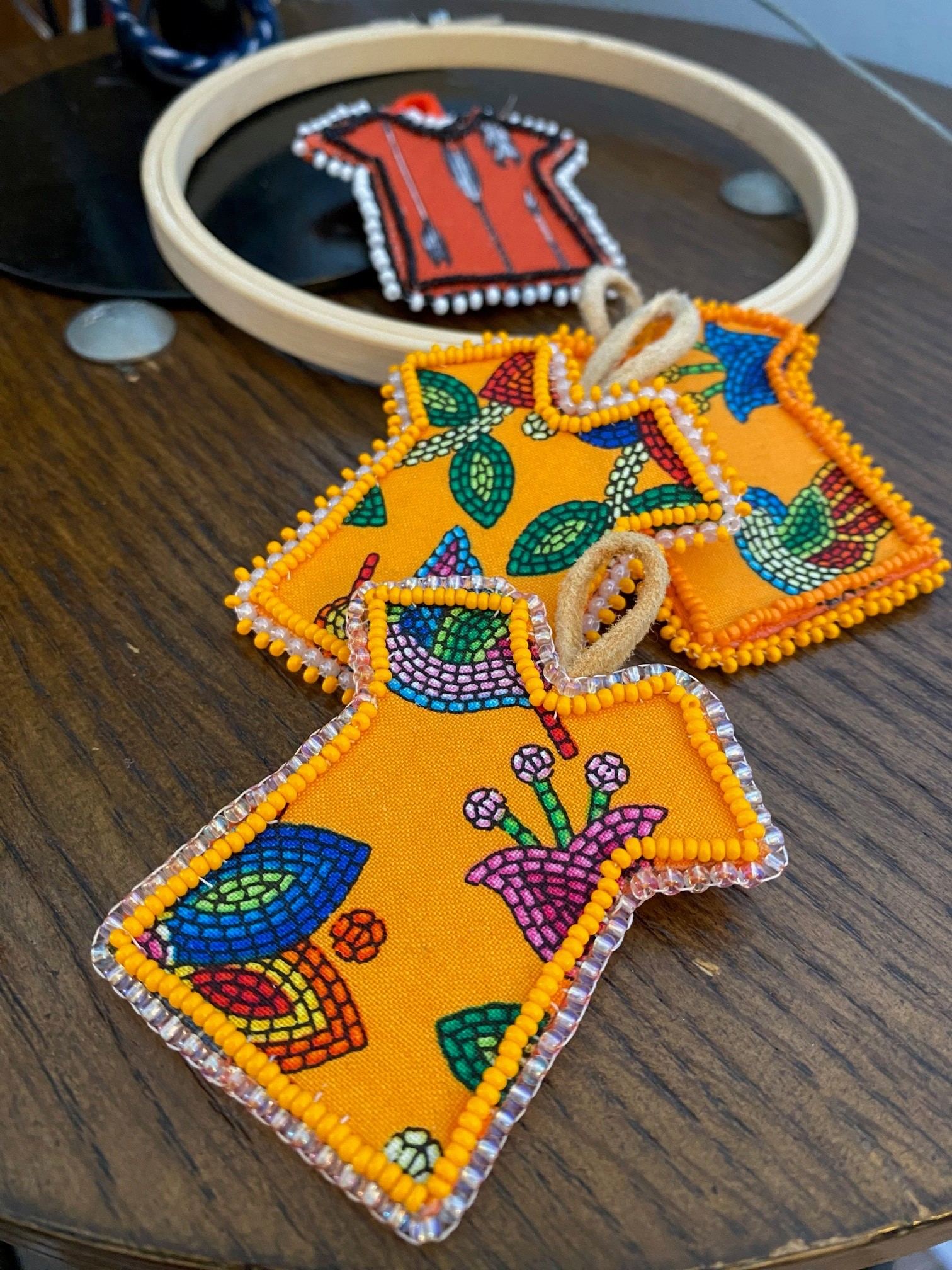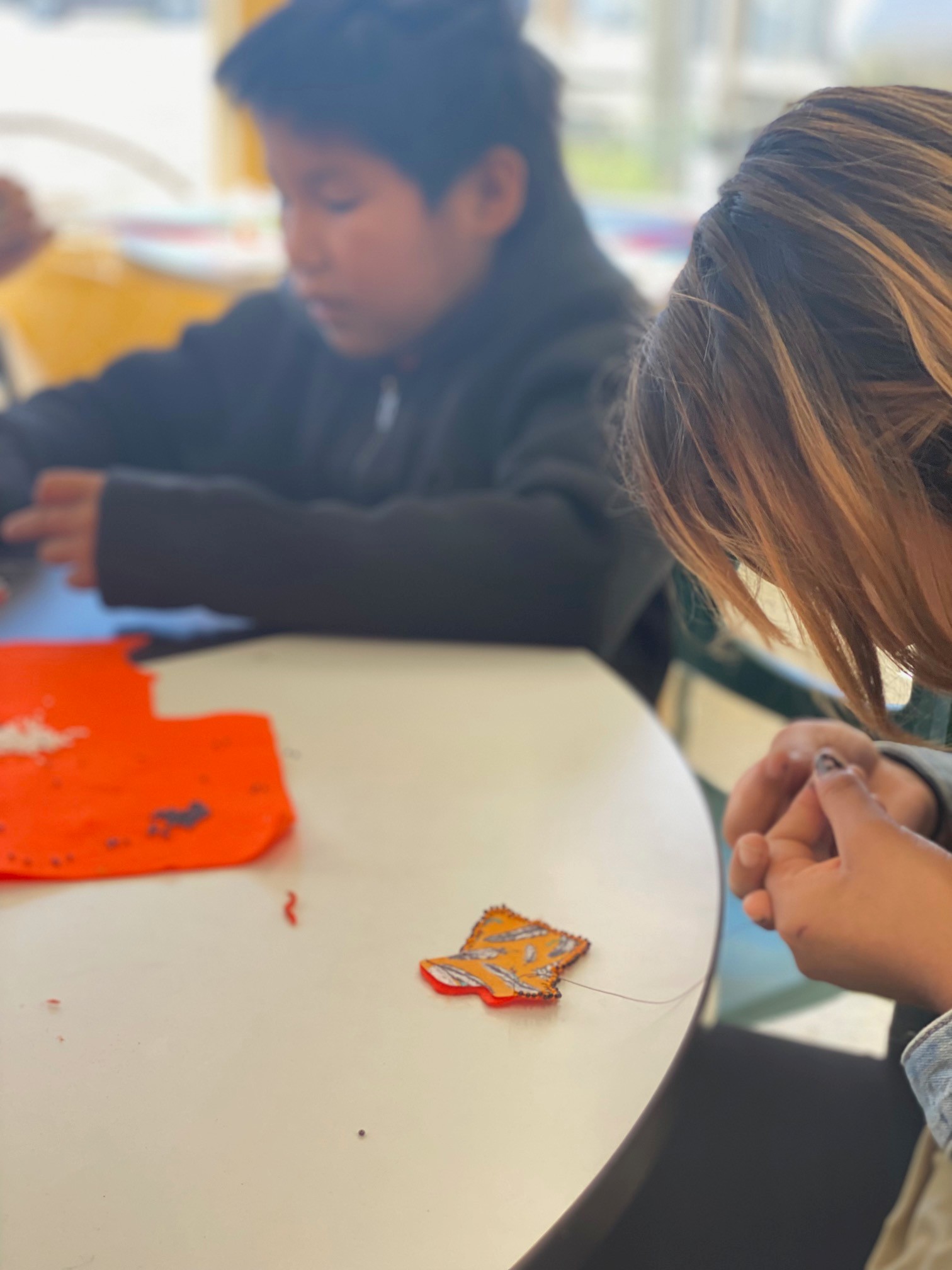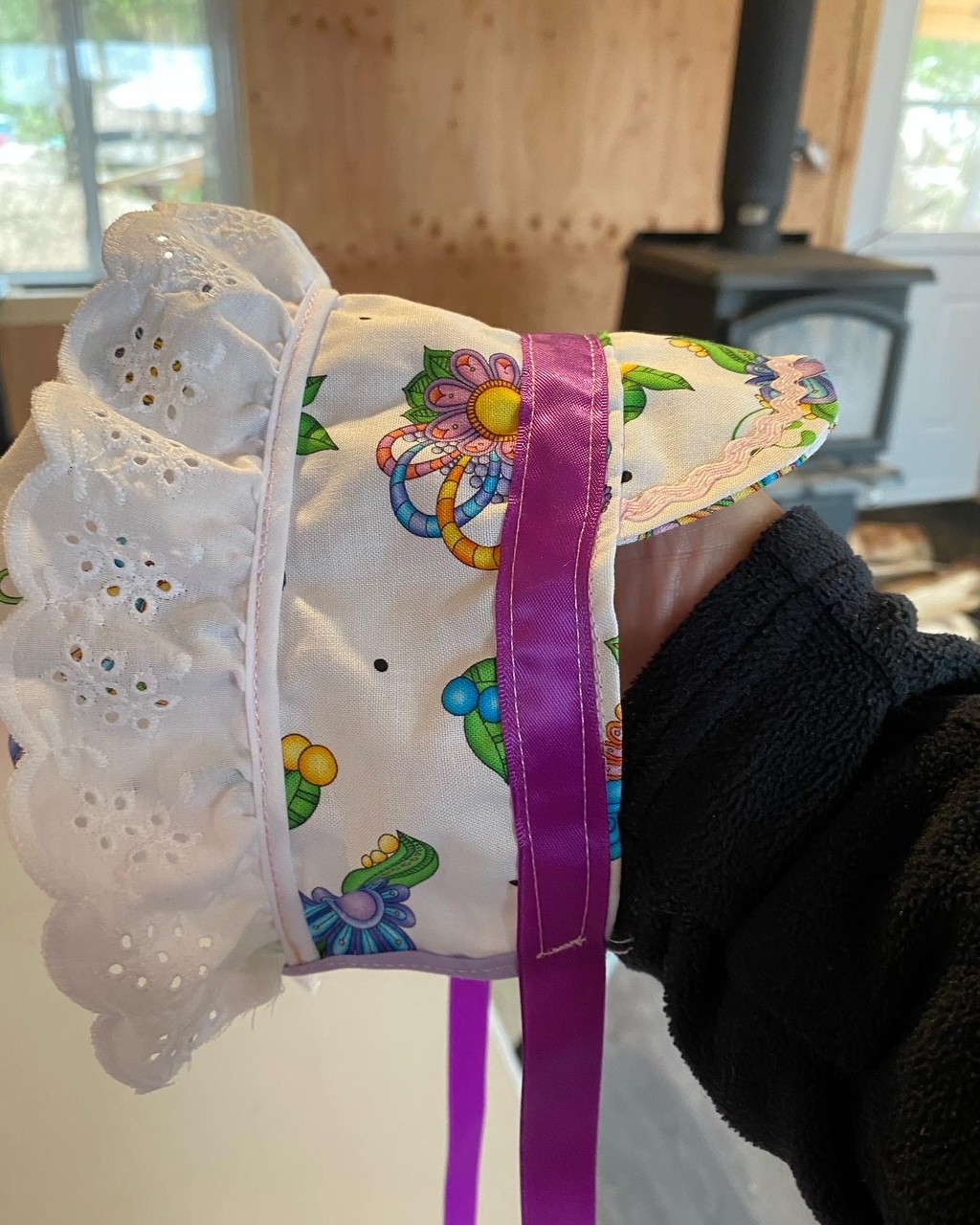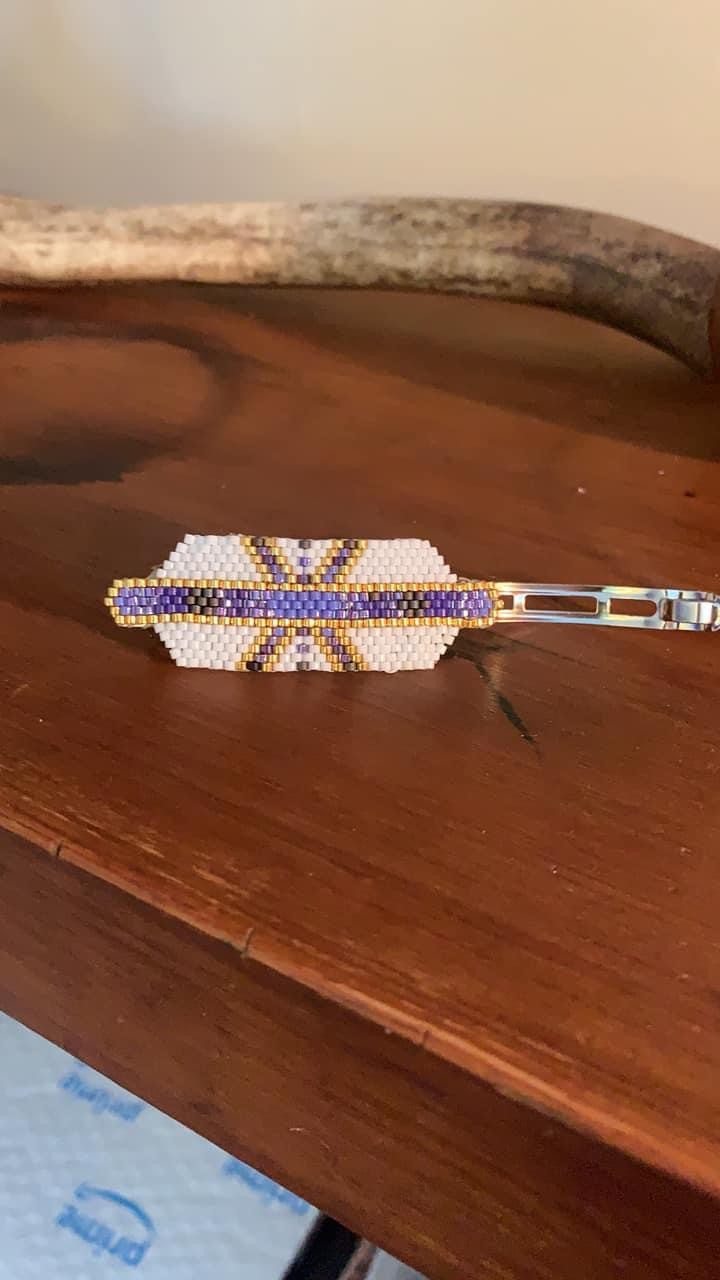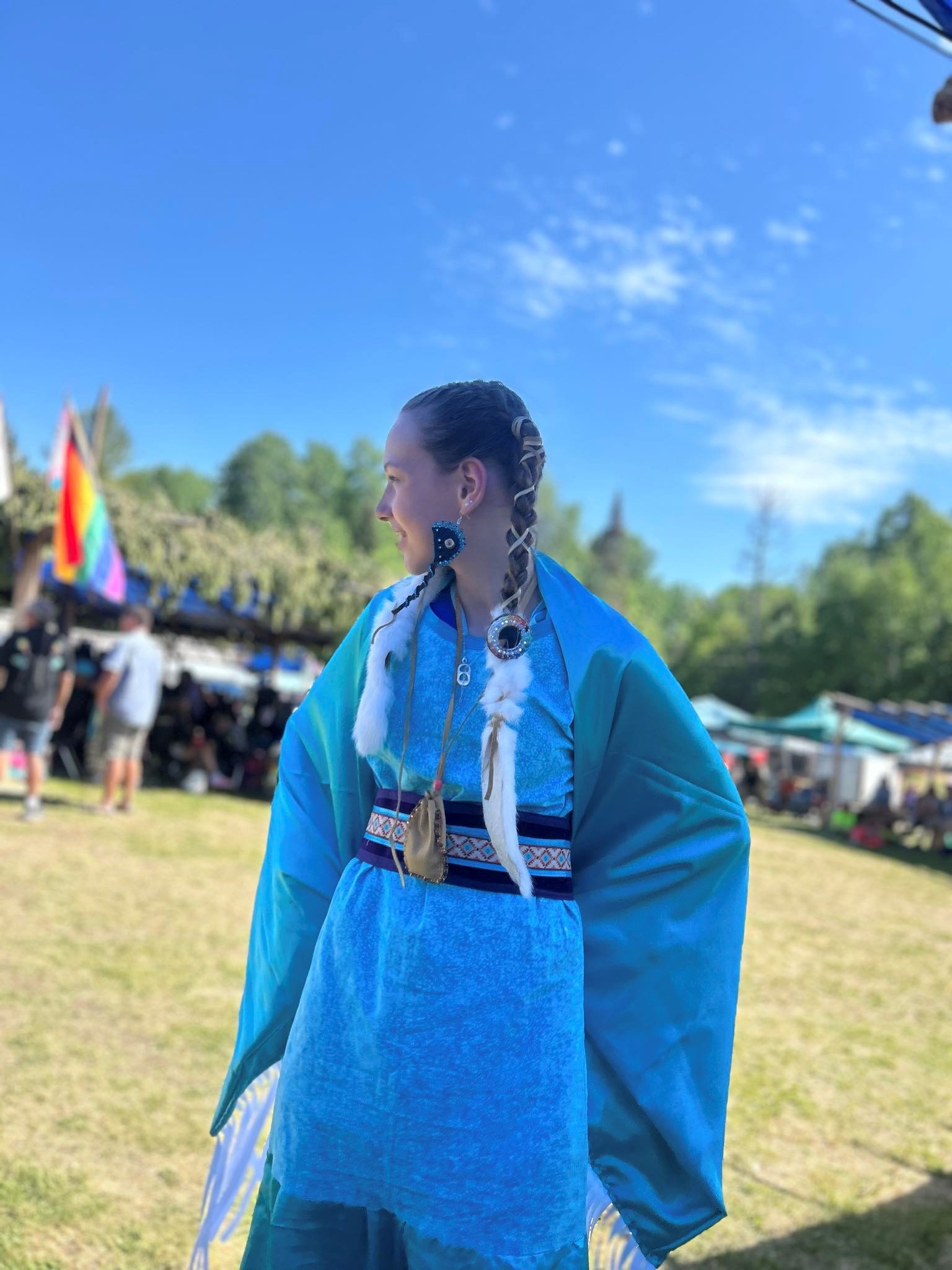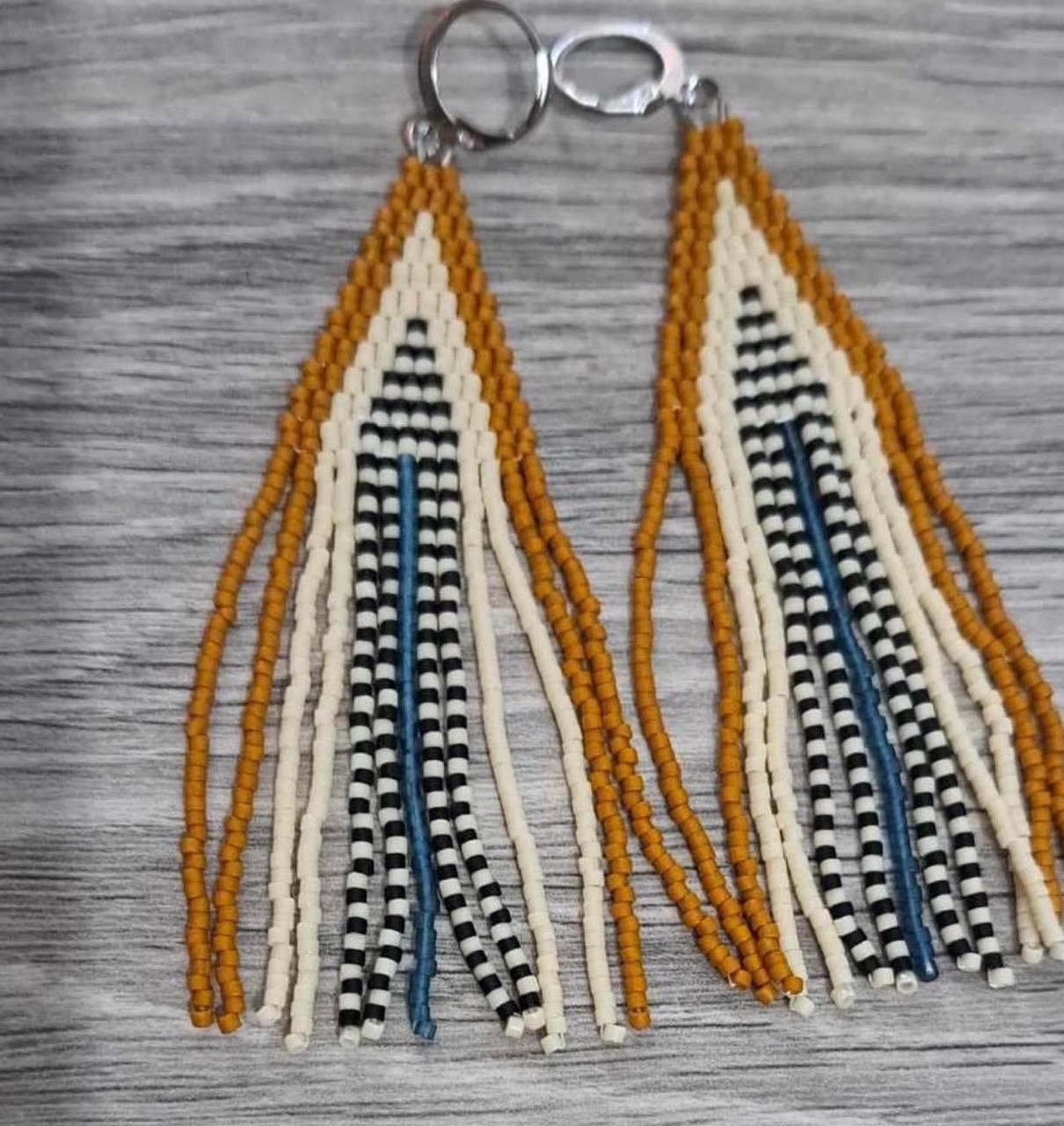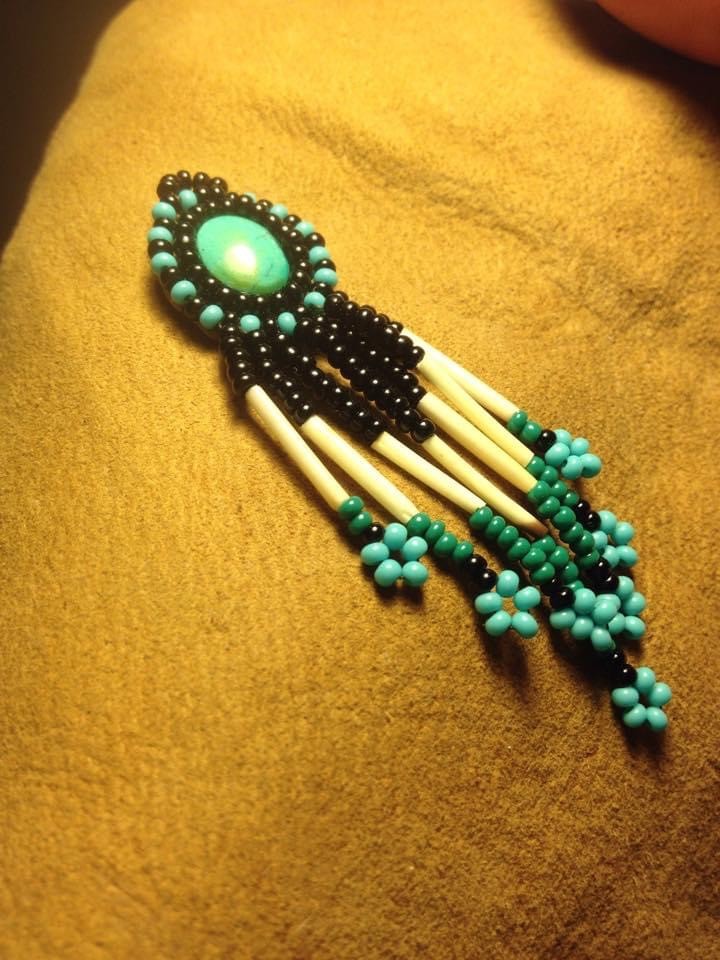Pascale-Josée Binette comes from the Nottaway/Pisane/Tiskwe family who lived in the Baskatong territory, members of the Kitigan Zibi and Kitiganik communities. She grew up, and still lives, near Val-d’Or. undefinedhas accompanied her in every sphere of her life. As a facilitator, she has been able to use creativity as a therapeutic tool, as much for women, elders and herself. Pascale-Josée holds a Certificate in Jewellery-making, an art she learned from the artisans around her, and has also studied Fashion Marketing.
Community involvement has been part of her life for over twenty years, both in her actions and in her artistic approach. She has worked as a counsellor, community organizer and facilitator in several organizations, with women, perinatal care and families. Among other things, she helped organize several vigils as part of Sisters in Spirit, in memory of missing and murdered indigenous women. She has also given awareness-raising workshops on occasion.
This commitment remains very present in her artistic and personal approach ensure that our realities are better understood and listened to.
Coming from a very creative family, art has always been a big part of her life. Her father is a very manual and imaginative man, and her sister is also a multidisciplinary artist. Art flows naturally through their family, passed down from generation to generation, through gestures, knowledge and stories. Her roots nourish her way of seeing, dreaming and creating. It’s a way of remaining linked to those who came before her, while accompanying the generations to come.
For her, art is a way to heal, refocus and reconnect with her anicinabe identity. “Creating helps me to stay in the present, to clear my head after difficult days, to get through whatever life brings. Each bead, each line, each stitch is a form of prayer, of balance, of healing.”
Pascale-Josée does a lot of beading, mainly earrings, but also lanyards, medicine pouches, barrettes and other traditional objects.
Pascale-Josée also does sewing and embroidery: she has made several regalia, ribbon skirts and shirts, moccasins and more.
Her knowledge was passed on to her by elders and mentors from Kitiganik, Lac Simon, Kitcisakik and elsewhere, through moments she still honors today.
“Alexis Weizineau passed on to me precouis knowledge about hide tanning, bark baskets and the artisan spirit.With Karl Chevrier, I had the chance to build a 16-foot birchbark canoe – a unique moment, since birchbark canoe making is part of my ancestors’ heritage. It was a dream to do it the traditional way, respecting every step.”
Pascale-Josée Binette also enjoys the medium of painting. “I started when I was very young, with a small watercolour kit given to me by my godmother. Isolated as a teenager, I took refuge in creation. But it was in 2012, when I discovered woodland art, that I really found my artistic voice.It was the first time I managed to get my visions out the way I felt them: shapes, colors, symbols – everything became clear.”
One of her most memorable projects was Odeimen, a cultural safety project in hospitals, in which she created two canvases now on display at Val-d’Or Hospital, entitled “Ka nitakiositc, the one who raises”. This project was very significant for her, as it touched directly on healing and cultural presence in the context of care, themes that are particularly dear to her. Pascale-Josée is currently working on several other artistic projects, including exhibitions.
We invite you to follow her Facebook page Joe Bine Migis, which serves as her boutique and allows you to follow her presence in certain markets.


